
AUGUST 2023 BRIGITTE BARDOT


AT SOBHA SEAHAVEN




With panoramic ocean views from your private balconies to exquisite interiors, indulge in the ultimate luxury of 800 999 999 T&C apply
Showrooms:
The Dubai Mall
Dubai Marina Mall
Mall of the Emirates Gold Souk
Contacts: +971 4 2262277
retail@mahallatijewellery.ae www.mahallatijewellery.ae
Social Media:
mahallatiJewellery
mahallatiJewellery
Mrs.Mahallati



























































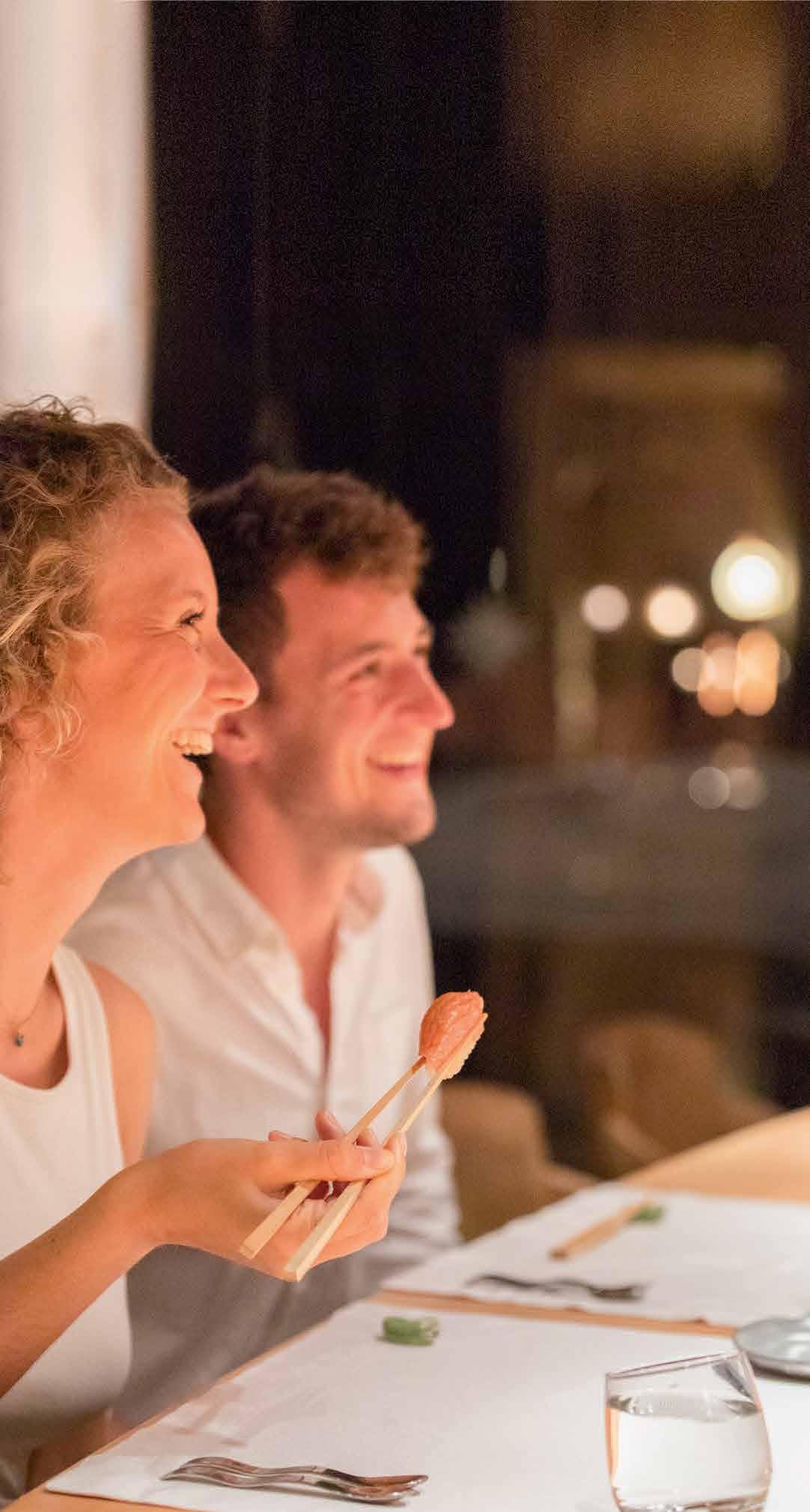












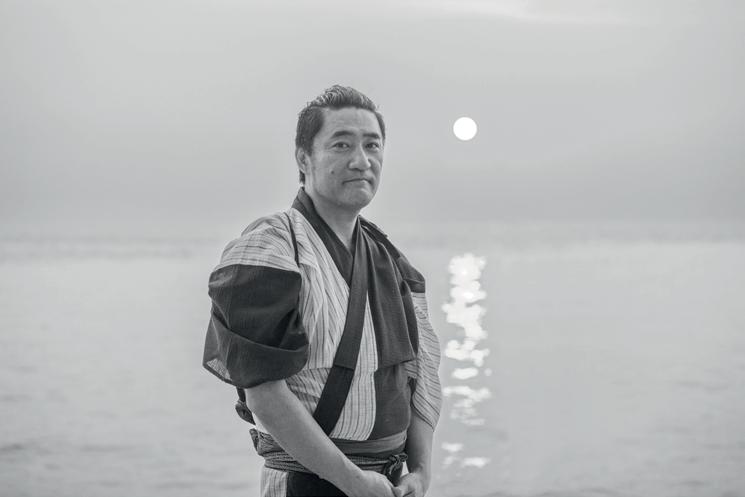
FEATURES
Thirty Eight To Know Bardot

A new photo book reveals the French actress and singer Brigitte Bardot at the height of her career.
Forty Four Blend It Like Beckham
Nothing was off limits as Victoria Beckham opens up on age, diet, fashion, and her bestselling make-up range.
Fifty The Whole Nine Yards
Meet the curator of a new exhibition highlighting the sari as one of today’s most important fashion stories.
AIR
Contents AUGUST 2023: ISSUE 143
8
Credit: Victoria Beckham SS24
Type XX 2067
The Breguet Type XX has accompanied the most experienced pilots since 1954, landing on the wrist with perfect precision. Make History with us.
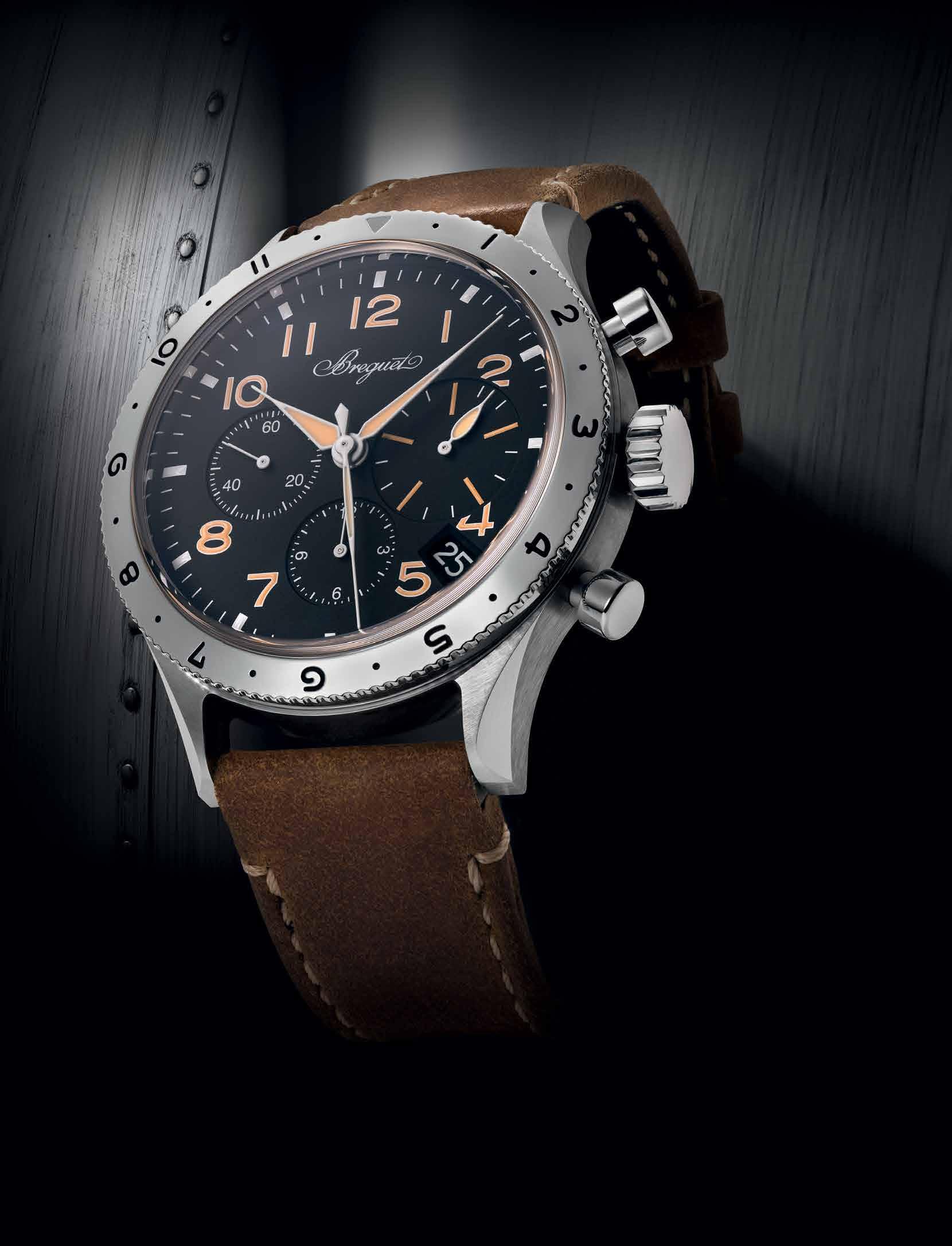
breguet.com
REGULARS
Eighteen Radar
Twenty Objects of Desire
Twenty Two Critique
Twenty Four Art & Design
Thirty Jewellery
Thirty Four Timepieces
Fifty Six Motoring
Sixty Four Gastronomy
Seventy Two What I Know Now
Sixty Eight Travel
Why The Peninsula Tokyo is the perfect spot for a first taste of this wonderfully welcoming city.

EDITORIAL
Editor-in-Chief & Co-owner
John Thatcher john@hotmedia.me
ART
Art Director Kerri Bennett
Illustration
Leona Beth
COMMERCIAL
Managing Director & Co-owner Victoria Thatcher
PRODUCTION
Digital Media Manager
Muthu Kumar
Media City, Dubai, UAE
Reproduction in whole or in part without written permission from HOT Media is strictly prohibited. HOT Media does not accept liability for any omissions or errors in AIR
AIR
Contents
AUGUST 2023: ISSUE 143 10



Welcome Onboard
AUGUST 2023
NASJET is the leading private aviation operator and services provider in Saudi Arabia that delivers world-class services in aircraft management, charter, flight support, sales, and completions. Launched in 1999 in affiliation with US partner NASJET Inc, NasJet — originally NASJET Middle East (NJME) — demonstrated the highest levels of regional expertise by being the first private company in Saudi Arabia to be awarded an Aircraft Operating Certificate (AOC) by the General Authority of Civil Aviation (GACA). The company has since grown to managing/supporting in excess of 15 fixed-wing aircraft and employing 92 in-house aviation industry experts. We operate 24/7 from a state-ofthe-art flight centre in Riyadh, Saudi Arabia, delivering superior levels of safety, service, and value.

VISION
To be the leading business aviation solutions provider in the Middle East.
MISSION
• Safety: Our clients’ and employees’ safety and security are the highest priority in all our operations and services.
• Standards: Our clients receive the utmost levels of service with world-class standards.
• Empowerment: Our employees are vital to our success and rewarded for outstanding performance and innovations.
• Profitability: We strive to ensure the full success and profitability of our organization.
• Responsibility: We pride ourselves on our work ethics and strive for the highest levels of professional standards.
VALUES
• Transparency: We are transparent with our clients and with each other.
• Efficiency: We achieve the highest levels of efficiency within our organization.
• Communication: We work as a team and communicate with each other to improve the success of our business.
Recently we have relaunched our company website to provide a more user-friendly, design-driven portal, which provides a full overview of our services and outlines the advantages of utilising them. You can visit it at nasjet.com.sa
We welcome the opportunity to serve you onboard one of our private jets.
Captain Mohammed Al Gabbas Chief Commercial Officer

Contact Details: nasjet.com.sa / +966 11 261 1199 / sales@nasjet.com.sa

13 NasJet AUG 2023: ISSUE 143
Cover : Brigitte Bardot by Douglas Kirkland, courtesy of Iconic Images
Ways We Can Serve You
Full range of services cater to your every need
Aircraft Management
Owning a private jet is certainly a pleasure, but it is also a significant capital investment. We can handle that hassle and give you peace of mind knowing that an established and experienced international operator is efficiently managing your aircraft. The company has grown to managing/supporting in excess of 15 Middle East-based aircraft.

Charter
NASJET has a dedicated fleet of ultra-modern aircraft available for immediate charter, including Airbus, Gulfstream, Legacy, and Citation Excel. We are also able to source any type of aircraft in the world if our fleet does not match your preference. Your requests and personal requirements are managed by a team of highly experienced charter experts focused on making your trip exceptionally comfortable and seamless. Remember, we are looking to exceed your expectations, with our Client Service team operating 24/7, 365 days a year, to ensure we are doing just that.
For frequent charter clients, we have a number of flexible and dynamic Block-Charter programs with all the usual benefits of the on-demand charter but with additional cost savings based on volume discounts and flexible payment terms. The charter programs allow you to take control of your flying requirements on a trip-by-trip basis. At the same time, it grants you access to the largest regionally managed fleet with seamless operations and a superior level of safety, reliability, and value. For Charter Broker inquiries, please contact our 24/7 charter department at +966 11 261 1199 or email charter@flynas.com.
Flight Support-Aircraft Owners
Aircraft owners managing an aircraft internally can still benefit from NASJET's unrivaled level of international support and significant
'economy of scale' cost-saving benefits. The NASJET Flight Center, Client Service, Charter Team, and Engineering Teams operate 24/7, supporting owners with flight planning, overnight & landing permits, ground handling, fuel management, accommodation, catering, aircraft insurance, maintenance, and evaluations. NASJET will provide aircraft owners with 'back-up' aircraft at attractive prices when their aircraft is unavailable. The core management fleet includes Airbus, Boeing, Bombardier, Cessna, Dassault, Embraer, and Gulfstream aircraft.
Aircraft Sales
As a world-class owner, operator, and manager of corporate aircraft, we are in a unique position to understand the many advantages and disadvantages of aircraft ownership. We offer real-time pricing analysis, aircraft financing at preferential rates, aircraft inspections, sales/ marketing collateral, and assertive price negotiations. Close ties with the leading business aircraft manufacturers, operators, and international sales brokers further ensure the information presented is accurate and timely. Dedicated teams are able to handle legal and administrative documentation, including registration and licensing, as well as scouring the market to present you with the widest
possible choice of aircraft. We have the required experience to enter into negotiations on any aircraft model, and together with marketing and advertising experts, we can help you buy or sell your aircraft with cost efficiency and the utmost discretion. With NASJET, you can be assured that your aircraft sale or purchase is being managed by aviation experts.
Completions Advisory
If you are planning to purchase a new 'green' aircraft or refurbish your current aircraft, we have the capability and wealth of experience to ensure the completion and delivery of the aircraft is to the highest standard, protecting the future residual value of your aircraft. NASJET and appointed partners provide advice on the design, selection, and installation of the cabin configuration, layout, type of seats, carpets, sidewall treatments, and other furnishings, entertainment and communication systems, galley, and lavatory fixtures, avionics packages, exterior paint, and extended warranty programs. Operating business aircraft in extremely hot and humid climates can mean the finishing and preparation of materials must be of a specific requirement. Capitalising on our regional knowledge as an operator of over 15 fixed-wing aircraft with hundreds of thousands of miles flown across every continent in the world, we guarantee your aircraft will be finished to the optimum standard.
AIR 14 NasJet AUG 2023: ISSUE 143


15 NasJet OCTOBER 2019 : ISSUE 101
Introducing Our Fleet
Over 19 fixed-wing aircraft are under our management
Airbus Corporate Jet (ACJ) A318
In NASJET, we have two types of Airbus A318, an aircraft that combines Airbus reliability and intercontinental performance.
Airbus A320neo
Airbus A320neo is distinguished by its innovative technologies and the spaciousness of its cabin the widest in the single-aisle aircraft category. The aircraft is equipped with a new generation of engines that contribute to a 15% cutback in fuel consumption and harmful emissions and a 50% reduction in noise level.
Boeing (B767) and Boeing (BBJ3)
Boeing Business Jets bring the best of private air travel, offering customers a wide range of Boeing products. The robust characteristics of this aircraft also provide an excellent value proposition
when outfitted for more personalised space, unmatched reliability, and worldwide support.
Gulfstream (G450) and Gulfstream (GIV-SP)
NASJET is the longest-standing Gulfstream operator in the Middle East. You can fly in a spacious and comfortable cabin, which includes a full-service galley to serve your favourite meals.
Embraer Legacy 600 and Legacy 650
The NASJET Legacy 600 has installed an Ionization System that eliminates 99.9% of all microbes, bacteria, germs, bad smells, etc., in the cabin air during flight. This Legacy 600 is the first and only business jet to have this system installed during the Covid-19 pandemic and will significantly reduce the virus's spread within the cabin air.
Cessna Citation Excel
The Citation Excel aircraft combines transcontinental range and remarkable efficiency in a beautiful mid-size jet. The cabin offers a comfortable room and a spacious interior. The high-quality leather seats are extra wide with full reclining capabilities for optimal comfort.
Bombardier Challenger 850
The Challenger 850 aircraft is considered a mid-range aircraft which offers a spacious cabin and a large baggage area.

Dassault Falcon 900B
The Falcon 900B aircraft is one of the quietest three engine aircraft with an excellent transcontinental range and the ability to carry a greater number of passengers.
AIR 16 NasJet AUG 2023: ISSUE 143
We are also able to source any type of aircraft in the world if our fleet does not match your preference
Taste The Difference
Why Waldorf Astoria Maldives Ithaafushi is the country’s gastronomy hotspot
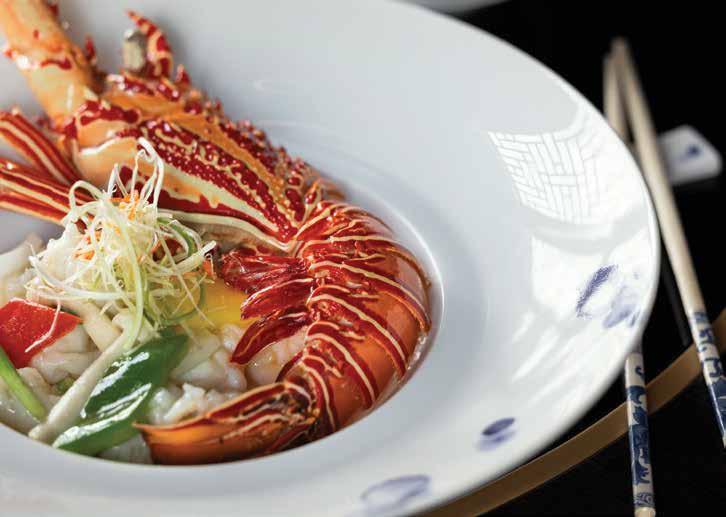


If you think the Maldives’ finest attractions all come courtesy of Mother Nature’s fair hand, the sublime Waldorf Astoria Maldives Ithaafushi will serve you food for thought. In fact, there are eleven good reasons why this celebrated slice of private island is less about the crystal clear ocean and cotton-soft sand (though they remain soul-stirring) and more about the outstanding restaurants and bars (eleven in all) that have made it somewhat of a gourmand’s paradise.
The height of sophisticated dining, Terra takes top billing (no mean feat when Waldorf Astoria Maldives Ithaafushi is also home to the country’s only Zuma). Its unique setting — in the treetops, where seven circular bamboo pods accommodate couples and look out to the moonlit ocean — is spectacular, but so too is the food. A multi-course menu comprised of some of the finest ingredients on earth (wagyu from Japan’s Miyazaki prefecture, widely considered to breed the holy grail of beef; Alba white truffle when in season) is artfully presented and paired with

premium wines (plucked from racks at The Rock, the resort’s stunning stone cellar, that doubles up as a 12-seat restaurant for exclusive wine dinners) and signature Krug Champagne, selected by the Maldives’ first Krug Ambassador. Exceptional. Additionally, Terra routinely welcomes Michelin-starred chefs from across the globe for exclusive residencies. The hugely talented Grégoire Berger, from Dubai’s Ossiano, the latest visitor. Berger’s residency culminated in a memorable six-hands dinner (alongside two other Michelin-starred chefs) at The Ledge by Dave Pynt, the resort’s other main draw card. Pynt is the man behind Burnt Ends, the multi award-winning Singapore restaurant that’s an annual fixture on the list of the World’s 50 Best Restaurants. The joys of this modern Australian barbecue concept transfer effortlessly to the Maldives, and it treats meat with a certain reverence. So much so that the humble hamburger here is simply without equal, elevated to an art form.
Waldorf Astoria Maldives Ithaafushi plucks many of the ingredients for its stellar
restaurants from the resort’s own garden, and Glow — a toes-in-the-sand, garden-totable concept — utilises the best of it in a wonderful, ingredient-rich menu backed by biodynamic, sustainable, and natural wines. It’s Peking duck that’s the star of the show at Li Long, where it’s roasted in the Maldives’s first classic woodfired oven and carved tableside. Snag a table on the ocean-facing terrace and leave it to your waiter to select the choice picks from a menu of outstanding Modern Chinese dishes. For a taste of home – in a setting reminiscent of an old Arabian village –Yasmeen is a wonderfully atmospheric spot where Saj bread is baked in a traditional oven and the charcoalgrilled seafood is exceptional. While for a taste of the familiar, the Indian Ocean’s first Zuma is a match for any of its other international outposts, though nowhere compares to its setting here, perched atop the iridescent ocean. Just like nowhere in the Maldives can match Waldorf Astoria Maldives Ithaafushi when it comes to gastronomy.

AIR X WALDORF ASTORIA MALDIVES ITHAAFUSHI 17
Chanel’s Fall-Winter 2023/24 Haute
Couture show was staged aside the Seine, the collection that trotted down the cobbled runway every bit as Parisian, capturing the very essence of Frenchness. In the weeks leading up to the show, the Chanel haute couture ateliers make the final tweaks to pieces that, in many cases, have taken hundreds of hours to craft as they pass through multiple hands for signature embellishments, such as flowers, exquisitely embroidered in sequins. AIR took an exclusive look behind the scenes when the models were invited in for their final fittings.

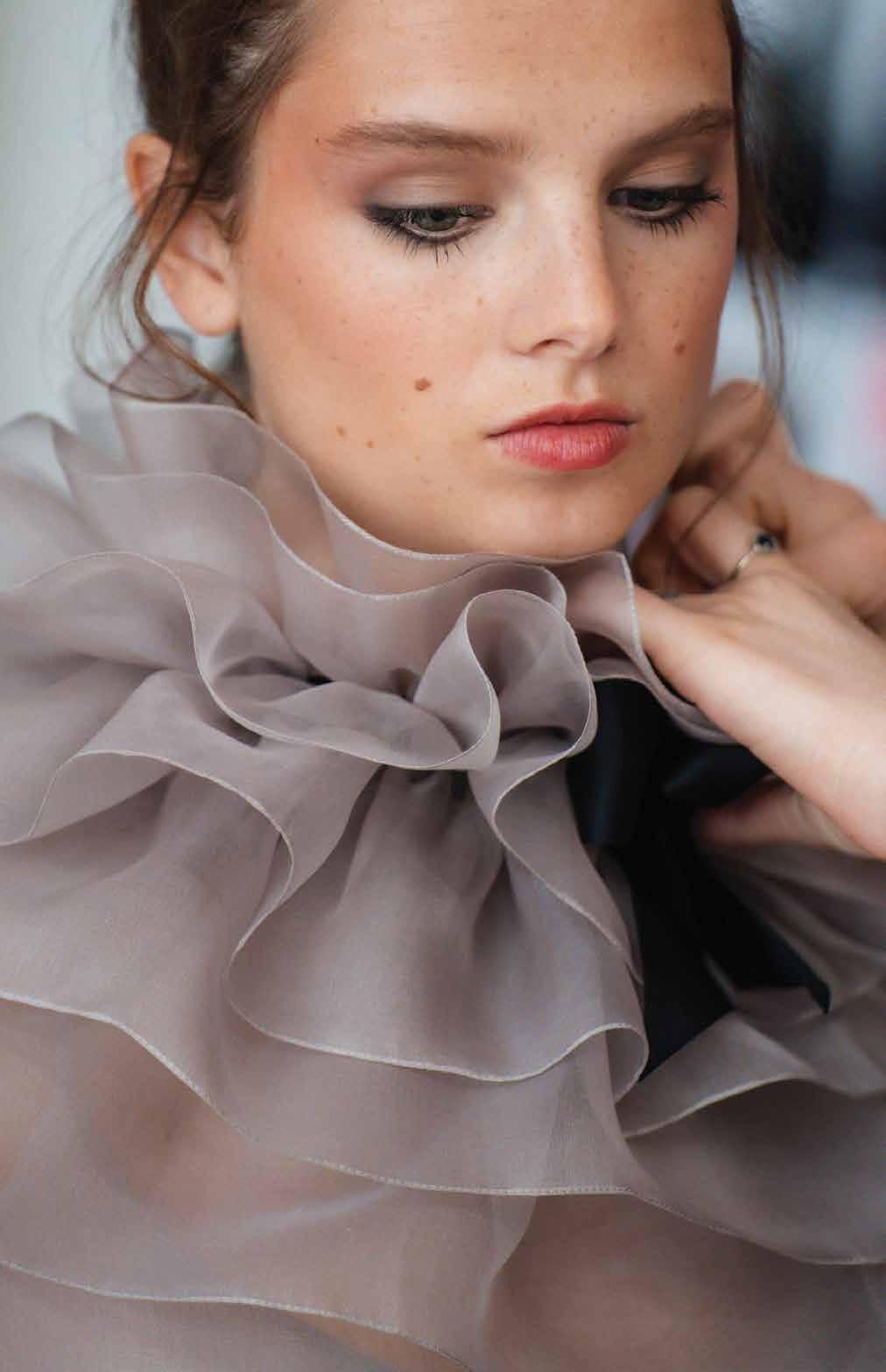
18 AIR Radar AUGUST 2023: ISSUE 143

19
OBJECTS OF DESIRE
Master craftsmanship, effortless style and timeless appeal; this month’s must-haves and collectibles
OBJECTS OF DESIRE
BOUCHERON MORE IS MORE
Boucheron’s creative director, Claire Choisne, always seems to have lots of fun dreaming up the second of her two annual high jewellery collections for the house, one free of any set parameters. That sense of freedom is conveyed in the eye-popping More
is More collection, via size, shape, and materials, with pop art and its confrontation of convention an overt influence. As such, rings are not just rings but also scrunchies, joyful expressions whether placed in the hair or slipped on a finger.

1
OBJECTS OF DESIRE
Originally designed in the 1950s for the French naval air army, Breguet celebrates the seventieth year of its Type XX timepiece by redesigning the line with two new models, making it look highly contemporary while loaded with nods to its proud history. The Type
20 chronograph 2057 sees its black dial modernised and its luminescent numerals cast in mint green, as are the hands. While the appearance of the Type XX chronograph 2067 is identifiable as a direct descendant of the finest civilian Type XX from the 1950s and 1960s.
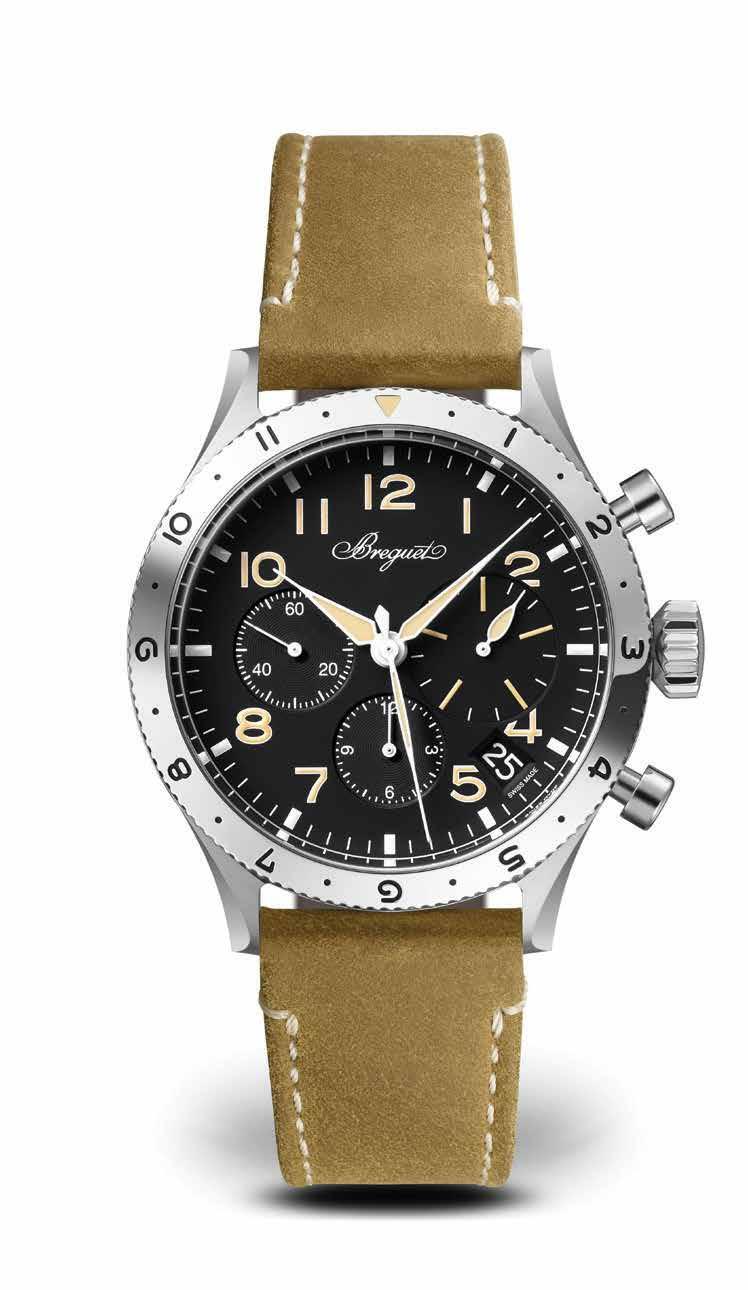 BREGUET TYPE XX
BREGUET TYPE XX
OBJECTS OF DESIRE 2
BERLUTI SPRING-SUMMER 2024
Since Kris Van Assche left his post as Berluti’s creative director — packing up his more expressive designs to take with him — the brand has retreated somewhat to the comfort of its codes, using them more and more across a full collection. Case in point is the Scritto
motif. Traditionally used to enliven shoes and leather goods, now it also appears on clothes, via knitwear and, in this collection, a packable parka. Elsewhere, the collection is an exercise in the perfect fusion of fabrics and leathers.

3 OBJECTS OF DESIRE
GIVENCHY SPRING 2024 WOMEN’S RTW
Givenchy’s creative director, Matthew M. Williams, dug deep into the archives for this collection, updating Hubert de Givenchy signatures (in particular, draping techniques) but also bringing in a fresh mix of materials. Tailoring focuses on graceful lines, with unstructured
silhouettes in silk twill that gives jackets, trench coats and trousers an easy refinement. For when day turns to night, Williams has created jersey dresses that have crystal-embellished 4G lace inserts, while thread-like metal chains are a feature of sheer slip dresses.

4 OBJECTS OF DESIRE
Infused with the wonder of the changing seasons, Gucci’s latest high jewellery collection reimagines Mother Nature’s glorious transformations. Spring shows in designs defined by fresh hues reminiscent of the blooms found in Gucci’s emblematic Flora motif, including a 161-carat cushion-
cut pink tourmaline, encircled by multiple levels of diamonds and coloured enamel, all set on a chain bursting with 72 fancy tourmalines. While winter is expressed by the likes of an enamel and diamond necklace, defined by a milky, iridescent 92-carat opal.

5 OBJECTS OF DESIRE
GUCCI ALLEGORIA

OBJECTS OF DESIRE 6
JAGUAR E-TYPE ZP COLLECTION
Jaguar has honoured its legendary E-type’s first race wins with Project ZP, a collection of seven exclusive pairs of restored E-types inspired by the 1961 winning cars. Each pair consists of one Oulton Blue drophead coupe, inspired by the original car driven by Graham Hill,
and a Crystal Grey fixed-head coupe. Powered by the 3.8-litre in-line sixcylinder Jaguar XK engine, unique features on each model include commemorative badging, soft Bridge of Weir leather, and a bespoke aluminium console engraved by artist Jonny ‘King Nerd’

7 OBJECTS OF DESIRE
Dowell.
A fresh take on the brand’s Lopez loafer, the new Bath model is supremely light and ultra-supple, while maintaining all the hallmarks of John Lobb’s expert craftmanship — an unlined, suede upper is stitched to a goodyear-welted sole,
holding its shape while giving flexible comfort. In fact, so confident is John Lobb that the new shoe will fit as snugly as a glove that it has loaded the loafer with distinctive stitching to provide a handsewn finish reminiscent of working gloves.

8 OBJECTS OF DESIRE
JOHN LOBB BATH
OBJECTS OF DESIRE
Film
Brother
Dir. Clement Virgo
Adapted from an award-winning novel of the same name, Brother follows the story of sons of Caribbean immigrants whose lives are forever changed one sweltering summer.

AT BEST: ‘Overwhelms with power and emotion, resulting in one of the most deeply felt films of the year.’ — Rachel Ho, Exclaim!
AT WORST: ‘An overly familiar Black drama with frustrating storytelling.’ — Rendy Jones, Rendy Reviews
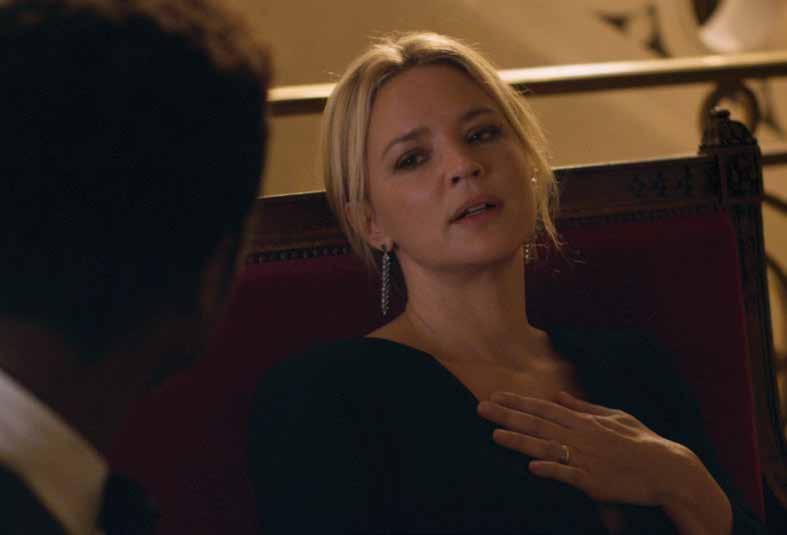
What Comes Around
Dir. Amy Redford
An immersive thriller in which a young love affair quickly turns into a menacing game of cat and mouse.
AT BEST: ‘Able to hit you so squarely and refuses to pull its punches.’ — Stephen Saito, Moveable Fest
AT WORST: ‘Miscalculated keenness to shock with only a handful of halfbaked ideas of little substance.’ — Tomris Laffly, Variety
LOLA
Dir. Andrew Legge
Set in 1941 against the backdrop of WWII, two sisters build a machine that can intercept radio and TV broadcasts from the future, including military intelligence.

AT BEST: ‘Gripping and uniquely strange alternative history tale. — Alan Corr, RTÉ
AT WORST: ‘The time-travelling paradoxes produce enormous plot holes and lapses of logic [but], Legge somehow makes it work.’ — Kevin Maher, The Times
Madeleine Collins
Dir. Antoine Barraud
In a tense psychological drama, a woman leads a secret double life split between two households in two countries.
AT BEST: ‘An absolutely stunning portrait of a monster.’ — Anne Brodie, What She Said
AT WORST: ‘Condenses much of its complicated, embryonic ambitions into a middlebrow soap opera.’ — Ayeen Forootan, In Review Online

22 AIR Critique
AUGUST 2023 : ISSUE 143
In Gayce Osborne’s I Know What You
Did, a woman’s peace is broken when her name appears on the dedication page of an anonymously written book with a cryptic note: “I know what you did… And now everyone else will, too.” Fellow author, Cate Ray, writes that it is, “An alluring premise of a book within a book… a real page-turner, starring anti-hero Petal who has a dry humour and a dark past. I was gripped all the way to the dramatic cinemaesque finale.” Philippa East calls it a, “A whip-smart and thoroughly engaging psychological thriller, with a highly memorable protagonist and a brilliantly original narrative concept. I raced through it in a matter of days and found it a brilliantly fresh voice in the psychological thriller genre.” While Christina McDonald hails “A psychological thriller with a beating pulse… Gripping, atmospheric and sharp, this fresh, new voice is written with a wry humour. A must read.”
The latest novel from acclaimed Omani author Jokha Alharthi, Bitter Orange

Tree is a portrait of one young woman’s attempt to understand the roots she has grown from, and to envisage an adulthood in which her own power and happiness might find the freedom necessary to bear fruit and flourish.

“In this novel of remembrance and regret, Zuhour, an Omani student at a British university, obsessed with the possibility of ‘regaining or restoring just one moment from the past,’ reflects on her grandmother, who has recently died . . . Much of the grandmother’s life story takes place in the context of devastating waves of drought, inflation, and famine, and Alharthi marshals these elements to construct a mosaic of history with women’s crushing vulnerability at its centre,” says The New Yorker. “In probing history, challenging social status, questioning familial bonds and debts, Alharthi’s multilayered pages beautifully, achingly unveil the haunting aloneness of women’s experiences,” reviews Booklist, in a starred review. Captivated by
Alharthi’s tale. TIME has hailed it as, “Epic” and “Breathtakingly descriptive,” further stating that it is the book of the year. Does timing, circumstance, or luck impact your health care? That’s the question researched and answered in Random Acts of Medicine. “[the book] Will dazzle you as it reveals ingenious ways that data sleuths have answered questions that can improve your health and health care. Stimulating, creative, and smart, this book is a treasure,“ says bestselling author Katy Milkman. “It is a rare book that manages to be both fantastically entertaining and deeply thoughtprovoking. This is such a book,” hails Emily Oster. While fellow author Steve D. Levitt writes that the book is, “Smart, entertaining, and full of surprises. The field of medicine has been slow to appreciate the immense power of natural experiments. Jena and Worsham [authors] are on a crusade to change that. Read this book, and you’ll be a believer.”

23 Critique Books AUGUST 2023 : ISSUE 143
A Day In The Life
Previously unseen photographs shot by Paul McCartney and rediscovered in 2020, capture The Beatles at the height of Beatlemania



AUGUST 2023: ISSUE 143 Art & Design AIR 24
WORDS:JOHN THATCHER


25
The rise of The Beatles was documented by many photographers throughout their years of global dominance. Astrid Kirchherr was one of the first, the Hamburg-based protege of the renowned Reinhart Wolf shot them in 1960 when they were still a quintet, featuring former members Stuart Sutcliffe and Pete Best. Celebrated duo Tom Murray and Don McCullin documented the Fab Four in 1968 as they spent a summer’s day freewheeling around London, a colourful 24 hours that was later turned into a book, Mad Day Out. While the great rock photographer Ethan Russell is credited with taking the last ever shot of the band together, in 1969. “Paul was trying to hold it together. He had his arms crossed like, ‘Come on, lads!’ But the concept of The Beatles just didn’t sync with who they were any more. I could have asked them to smile, but it would have been totally fake and I’m glad I didn’t. This marriage had come to an end – and boy does it show,” he told The Guardian But though they and others got close to the Beatles, one amateur photographer had the inside track –Paul McCartney. “Millions of eyes were suddenly upon us, creating a picture I will never forget for the rest of my life,” recalls McCartney of his time at the height of Beatlemania. Using his own camera, McCartney documented his band from November 1963 until February 1964, as it emerged from the confines of Liverpool’s Cavern Club to
become a global cultural phenomenon. Previously unseen in public, the photographs were rediscovered by McCartney in 2020 while sifting through the archives of his production company. More than 250 were since selected from a pool of over 1,000 to form a major exhibition, Paul McCartney Photographs 1963-64: Eyes of the Storm, on show at London’s recently reopened National Portrait Gallery until October 1.
“We all know what Beatlemania looked and sounded like from the outside, but what did it look and feel like for the four pairs of eyes that lived and witnessed it first-hand? Over more than half a century, we have become familiar with press photographs showing the smiling Beatles and their screaming tans, but Paul McCartney’s intimate photographs have more in common with a family album, capturing people caught in off-guard moments of relaxation and laughter,” says Dr Nicholas Cullinan, Director at the National Portrait Gallery. Now globally recognised as one of the leading cultural figures of the 20th and 21st centuries, thanks to his unrivalled songwriting skills, Paul McCartney’s interest in the visual arts is evident in his photographs, reflecting styles and aesthetics of the period, including New Wave, documentary filmmaking and photojournalism.
Travelling with the Beatles, he absorbed cultural influences, adapting his style to achieve a particular atmosphere, and learned from the photographers
he worked with, who embraced the imperfections of ‘snapshot’ photography. It affected a down-to-earth approach, showing acute observation in the intimate portraits he captured of John Lennon, George Harrison, Ringo Starr, and Beatles’ manager Brian Epstein, who are pictured in moments of concentration, relaxation, and joy. While McCartney was nearly always surrounded by media, he also used his camera to draw out personal encounters with press photographers and individuals, often set against a backdrop of roaring crowds — sometimes driving through streets thronged with screaming fans. One such shot was taken from a car McCartney was in as it crossed the Avenue of the Americas in New York, people chasing after it. The moment, and others like it, were the bases for scenes in the Beatles’ movie, A Hard Day’s Night.

“Not only has he absorbed the ideas around photojournalism… the CartierBresson idea of capturing that decisive moment, but he’s already looking to frame shots, looking for interesting angles,” Photographs Curator Rosie Broadley – who helped select the photos for the exhibition – told the BBC. “He understands what makes a good portrait, he’s quite good at placing a figure in space, [and] he’s interested in architecture and the interesting perspectives you can get.”
“The truth is that I have always been interested in photography, from the time I was very young, when our family owned a little box camera in the 1950s. I used to love the whole process of
AIR 26
‘ Paul’s work shows us what it was like to look through his eyes while The Beatles conquered the world ’
Opening
Opposite
This page, from top to bottom: George at Miami Beach, February 1964. © Paul McCartney; photographers, Central Park, New York, February 1964 © Paul McCartney; crossing the Avenue of the Americas, New York, February 1964 © Paul McCartney
loading a roll of Kodak film into our Brownie camera,” reveals McCartney.


Frenzied fans were a feature of the band’s first transatlantic visit, a visit Broadley heralds as “pop culture folklore.” Indeed, the photographs capture the final days of The Beatles’ tour of America, during which the group appeared on The Ed Sullivan Show and were watched by a record-setting audience of 73 million people – equating to 60% of the TV watching audience in America. “Paul’s work shows us what it was like to look through his eyes while The Beatles conquered the world,” says Broadley. Reflecting on what he captured on camera as he and his mates from working class suburbs of Liverpool were catapulted to global superstardom, McCartney says: “Looking at these photos now, decades after they were taken, I find there’s a sort of innocence about them. Everything was new to us at this point. But I like to think I wouldn’t take them any differently today. They now bring back so many stories, a flood of special memories, which is one of the many reasons I love them all.”
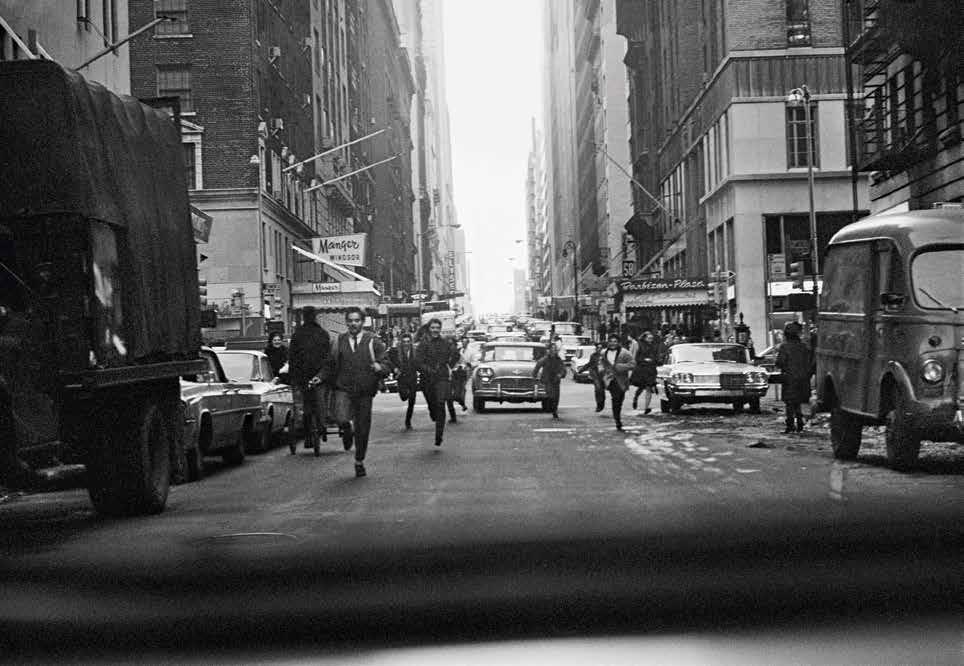
27
pages, from top to bottom: Self-portraits in a mirror, Paris, 1964 © Paul McCartney; John and George, Paris. 1964 © Paul McCartney; Ringo Starr, London 1363-4 © Paul McCartney.
page: John in Paris, January 1964 © Paul McCartney
HAUTE LIVING
In line with the singular beauty, master craftmanship, and timeless allure that define haute couture, Serenity Mansions at Dubai’s Tilal Al Ghaf, an upscale community built around a large lagoon and ringed by powdersoft sand, are artfully designed to fulfil a client’s specific desire.
Just as a couture dress starts out as a sketch from the hand of the couturier before being brought to life in the atelier, so too does the design of your bespoke mansion begin as a
blank canvas, awaiting the expression of your unique personality. Top to bottom, inside and out, every inch of your Serenity Mansion can be altered for a custom-fit, from the number of rooms and how they are laid out, to the lavish materials used and how it is constructed. And just as every couture dress is one of a kind, no two homes at Serenity Mansions will ever be the same, a unique residence crafted to fit only you, one that represents the very pinnacle of haute living.
ART DIRECTOR: KERRI BENNETT PHOTOGRAPHER: ZIGA MIHELCIC
LOCATION: TILAL AL GHAF, BY MAJID AL FUTTAIM
Timepieces NOVEMBER 2016 : ISSUE 66








Stylist
Lindsay Judge
Hair and Make-up Yulius Danus bareface.com
Model Ana C bareface.com
Clothing
Rami Al Ali Ready to Wear AW23/24
Shoes
Rami Al Ali
Pearly Queen
talks royal tiaras, pushing design boundaries, and the enduring appeal of pearls
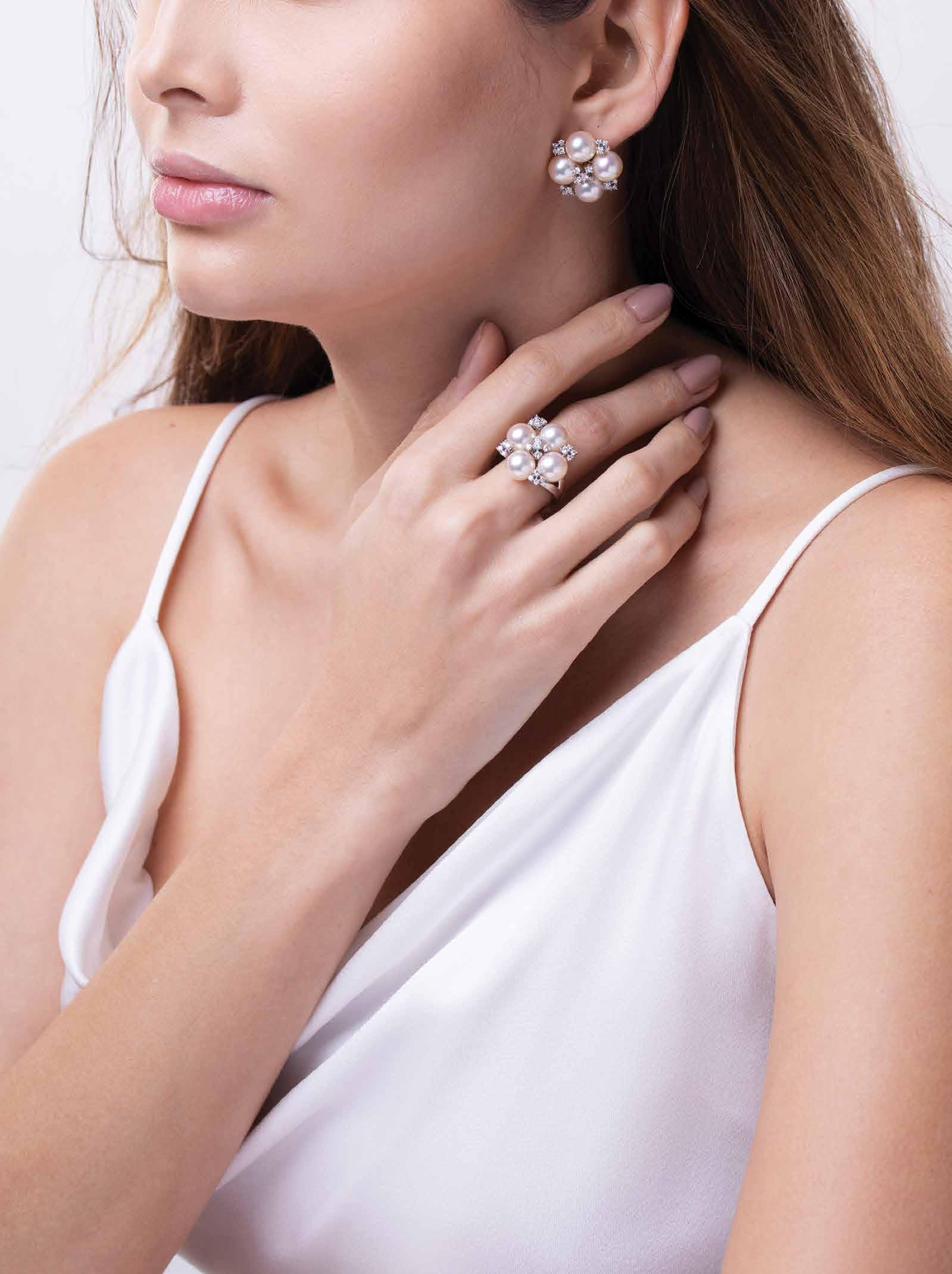
AIR
30
The CEO of Yoko London

Jewellery AUGUST 2023 : ISSUE 143 31
Pearls are back in fashion. You’ve probably read that on multiple style-focused platforms this year. As you would have done at some point in 2022, when L’Officiel stated that ‘pearls are back and better than ever’. And again in 2021, when Forbes declared them as ‘the biggest trend for summer’. I could go on through years gone by to find similarly bold claims of the pearl’s apparent resurrection among the style set, but you will, no doubt, have already got my point; that pearls have never not been in style.

It’s a view shared by Michael Hakimian, CEO of Yoko London, a luxury pearl jeweller which celebrates its 50th anniversary this year. “Pearls have a timeless allure that transcends generations,” he says, reflecting on their enduring appeal. “But I think the variety and innovation in pearl jewellery design contribute to this rise in popularity. Clients can find designs that reflect their own personal style, be it contemporary or classic.”
At Yoko London, that means trusting its team of handpicked experts to begin the process not with the person, but with the pearl. “The pearl has always been the focus of every piece we create. In our London workshop, we meticulously hand select every pearl that is featured in our jewellery. And with each piece, we try to highlight the most beautiful part of the pearl.”
On rare occasions – such as the coronation of a new monarch – such pieces are even fit for royalty. To commemorate King Charles III’s ascension to the British throne earlier this year, Yoko London produced a one-of-a-kind tiara. The spectacular piece (available to view this summer at the brand’s flagship store on London’s Sloane Street) features nineteen p erfectly matched, lustrous Australian South Sea drop shaped pearls, ranging from 8-15mm, which move gently as the wearer moves. These pearls are placed amongst 24.97cts of diamonds and set in 18ct white gold, in an intricate design for which the pearls, of course, take star billing. “From design to production, it took several months to create,” says Hakimian, who took on the role of CEO at the company his father founded, where colleagues include his brother and sister. ‘We sourced the pearls from several farms to ensure a perfect
match and to achieve a seamless graduation. These pearls were then set by hand in our London workshop.”
Though the Coronation Tiara may have been the headline-hogging piece, Yoko London’s latest high jewellery collection – revealed at this year’s Haute Jewels Geneva – features a number of spectacular creations. ‘Whisper’ is a South Sea pearl and diamond necklace in 18ct white gold, for which seven luminous pearls are suspended beneath 16.65cts of scintillating diamond curves. The same design is used on a pair of matching earrings, this time a 14.1mm South Sea pearl hangs beneath 3.65cts of diamonds.

Referencing a refined era in British history, the ‘Regency’ necklace features four rows of luminous Akoya pearls, accented by 8.18cts of ornate diamonds and three exceptional drop-shaped South Sea pearls. Accompanying it is a pair of 18k white gold earrings, designed so that a

32
AIR
12mm South Sea pearl sits beneath an intricate assembly of diamonds.

As its name suggests, ‘Bubble’ is a playful mix of numerous Akoya and South Sea pearls of varying sizes that fill the space inside a split circle characterised by 6.11cts of diamonds. Mimicking the freedom of bubbles floating through the air, a matching pair of earrings feature a mix of nine Akoya and South Sea pearls, measuring between 6-10mm.
E legant is ‘Heirloom’, a beautiful collar necklace that sets a number of South Sea and Akoya pearls among 9.03cts of dazzling diamonds.


“Each unique piece is a manifestation of our mission to keep redefining pearls (the brand’s motto), showcasing the majesty, beauty, and versatility of these extraordinary gifts of nature,“ says Hakimian, who has seen the likes of Michelle Obama, Beyonce, and Lady Gaga sport his team’s designs. “We can cater for anything a customer is looking for in pearl jewellery, whether
a classic heirloom or a modern, fashion forward piece. We aim to continually push the boundaries of pearl jewellery design. We have a vast inventory of loose pearls and strands, allowing us to have a huge variety of options when selecting pearls for each piece.”
Such dedication to setting its own standards extends to the pearl farms Yoko London draws its bounty from. “Over the past 50 years, we have actively chosen to partner with some of the most trusted, environmentally aware, and sustainable pearl farmers in the industry. We now work with thirteen pearl farms across the globe where we have first refusal on the harvest.”
It’s a similar case with the diamonds that are used. “We guarantee that every diamond used in our pieces is conflict free and adheres to the requirements outlined by the Kimberley Process.”
T he other guarantee, of course, is that their pearls will never fall out of fashion.
33
‘ Pearls have a timeless allure that transcends generations’
Opposite page, top to bottom: Coronation Tiara; Regency This page, top to bottom: Whisper
Made In Britain
How an alliance of watchmakers is aiming to restore Britain to its former glory
WORDS:JOHN THATCHER

34 AIR Timepieces AUGUST 2023: ISSUE 143

35
Switzerland may be cited as the cradle of watchmaking, but it could so easily have been Britain.
“It’s a classic case, sadly, of ‘snatching defeat from the jaws of victory,” argues Alistair Audsley, CEO of the Alliance of British Watch and Clock Makers, founded in 2020 to represent a broad and diverse line up of watchmakers, from world-renowned horologists through to innovative start-ups.

“Firstly, Britain has an undeniable heritage of innovation thanks to a pantheon of great horologists, such as Tompion, Arnold, Mudge, and Graham. Then you’ve got John Harrison, who invented the Marine Chronometer, solving longitude while at sea, changing navigation forever. By the late 19th century, more than 70% of the world’s commerce depended on sea charts that used Greenwich as the Prime Meridian, so Britain literally became the centre of global time.
“However, although Britain was the world’s main producer of watches, we’d adopted a very protectionist approach to the practise of craft horology. With the Industrial Revolution came an

unprecedented demand for people to be able to measure time personally — to ‘clock on and clock off’ at the factories they worked in. During the Great Exhibition in 1851 (which took place in London), some enterprising people from Europe proposed a de-skilling and separation of the watchmaking trades to encourage mass production. But instead of being embraced, they were virtually hounded out of London and took their approach to the USA, where it prospered. You could almost chart the decline in Britain from there.” However, the tale of Britain’s watchmaking prowess does not end there. “Britain’s story today is one of potential and, for me, what is particularly exciting is that, with our exceptional heritage and renewed energy, we’ll see enormous growth in the coming years.”
It’s thanks to Audsley and his team at the Alliance that Britain finds itself in such a position, on track to meet its long-term ambition of returning a greater share of production back to the isles. “We have 79 member brands,” enthuses Audsley. “Each is unique.”
At the horological pinnacle – not just in Britain but globally – is Roger Smith, who is also the Alliance’s Chairman.

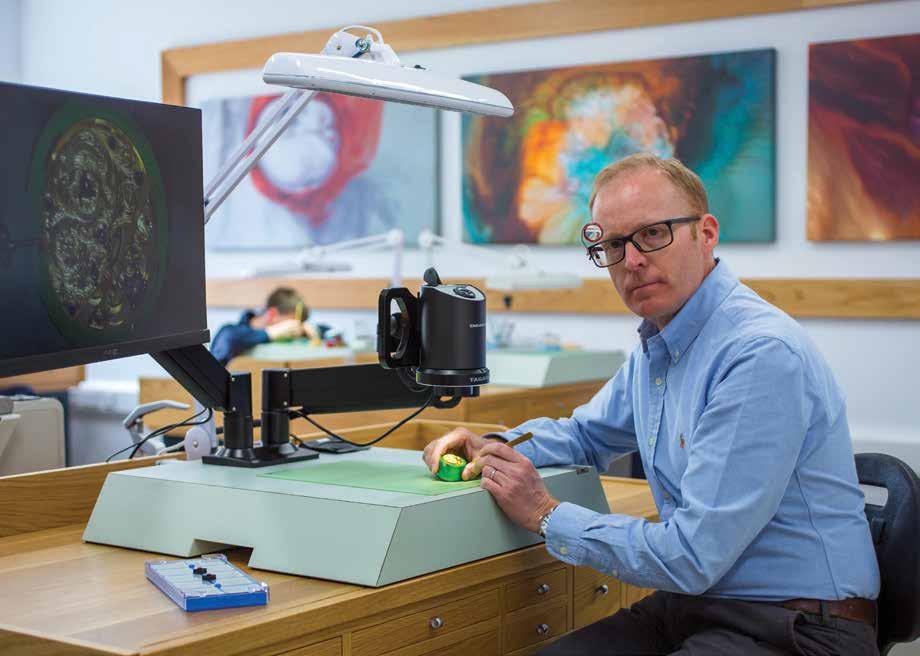

“His studio only makes 15 watches per year, each according to the Daniels Method [George Daniels’ pioneering process of making watches by hand]. A concept is initiated at one end of the studio and the resulting watch, built to a staggering standard by hand, emerges at the other.
“Of great interest to me are the resurgent heritage brands we have. Great examples are Fears and Vertex, both businesses restarted by the descendants of their founders.
“You’ve then got brands that exemplify the creativity and design that are quintessentially British, such as Mr Jones watches and fast rising star, Studio Underd 0 g, whose watch designs put a smile on your face.
“For those interested in true personalisation, you’ve got to discover the work of Bamford Watch Department. They’ve produced some sensational customisations of premium Swiss brands, while also producing their own unique designs.

36 AIR
Opening pages, from left to right: George Daniels, blue tourbillon, white gold wristwatch; George Daniels, 1972 This page, clockwise from left: Roger Smith Series 4; Bryan Leech, Sidereus; Sidereus newgrange watch with midnight blue dial; Fears, brunswick jubilee edition; Roger W. Smith
‘ Britain has an undeniable heritage of innovation thanks to a pantheon of great horologists’
“Meanwhile, Sidereus in Ireland is a great example of how founders have come into the sector from ‘outside’ [the Alliance extends to the Republic of Ireland]. In its case, Bryan Leech was a high end product designer, having worked with the likes of Apple. He took his inspiration from a Neolithic site called Newgrange, which is a 5,000-year-old site used to measure solstices; arguably one of the world’s oldest clocks. Bryan was helped on his journey by another of our members, Schofield watches, founded by Giles Ellis, who again brings a wonderful eccentricity to his brand.
The support of Schofield watches for Sidereus’ initiative is an example of how Alliance members support one another, though the most famous is collaboration is that of Fears and Christopher Ward, who paired together to produce the Alliance 01, a limited edition of 50 numbered watches.

“What was so impressive about this was how both brands insisted that the Alliance 01 watch had to be the result of a true exchange of skills. You had two businesses with different cultures


and operations; Fears is a heritage brand making fairly low numbers of watches, while Christopher Ward is a modern disruptor producing high numbers of watches. It started with Fears’ managing director, Nicholas Bowman-Scargill, briefing Christopher Ward’s design team about Fears’ DNA and asking for them to interpret this. The watch deployed Christopher Ward’s jump hour movement, while Fears crafted the dials, cases, and straps.
“The result was a stunning example of how our members can not only collaborate but, as both businesses experienced, can become enriched by sharing knowledge.”
Sales of the Alliance 01 were restricted to members of the Alliance of British Watch and Clock Makers, and sold out in just over two minutes. Its success paved the way for an Alliance 02, which is currently in the planning stage. “When we launched the Alliance, we really had no idea how the brands would respond, but the open attitude and total understanding that, what’s good for British watchmaking is collectively good for our individual
brands, has really amazed me.”
Similarly surprising, though not to Audsley, is the interest in horology that exists within the younger generation.
“I think we tend to stereotype young people as solely obsessed with the digital world when, in fact, I believe more people across every age group are looking for the analogue — the crafted objects that we can build a deeper relationship with, inspired by the often amazing stories of the makers. That’s partly evinced by the explosion of interest in independent watchmakers among Generation Z globally.
“In parallel, look at how vinyl records have almost turned around the music industry. Here you have the least convenient way of listening to music possible, but the artwork, the tactility, and the organic sound reward with a far deeper experience than simply streaming binary data into your ears via Spotify.”
By amplifying the current buzz about British watchmaking, Audley’s Alliance ensures its only a matter of time before its watchmakers are making their own noise globally.


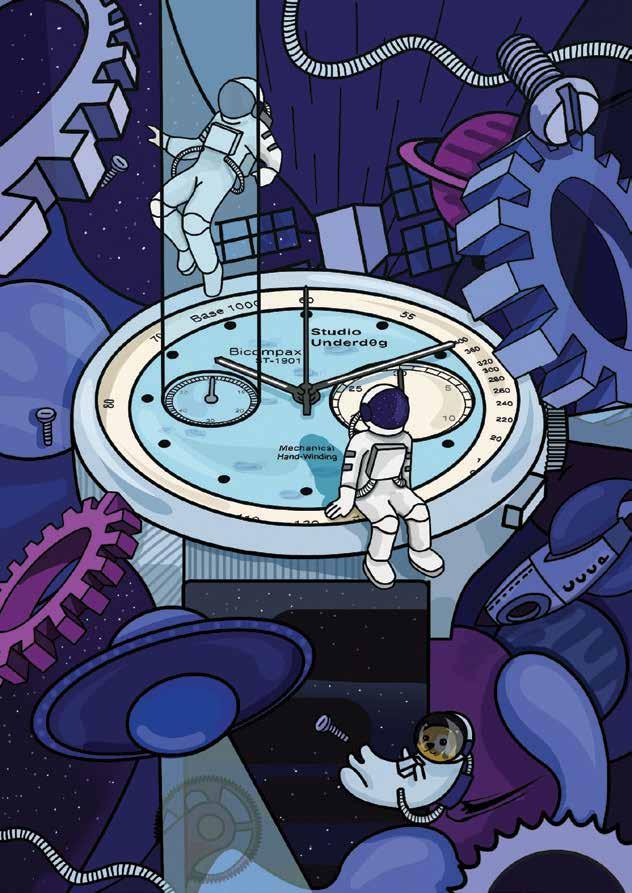
37
This page, clockwise from far left: Richard Benc, founder Studio Underd0g; Underd0g; Chris Ward, cofounder Christopher Ward; Mr Jones Watches; Studio Underd0g
These pages, from left to right: In Mexico, on the set of Viva Maria!, 1965; In 1971, shot by Douglas Kirkland; on the set of Les Pétroleuses, 1971, shot by Terry O’Neill
A new photo book recalls French actress and singer Brigitte Bardot at the height of her career – a huge name in the 1950s and 1960s, who suddenly retired
WORDS: CHRIS ANDERSON

38 AIR

39
Brigitte Bardot remains one of French cinema’s biggest stars. A major pop culture icon, prominent throughout the 1950s and 1960s, and a muse for the likes of Dior, Balmain and Pierre Cardin, she is recognised for her work in film, as a singer and model, and more recently as an animal activist. But having withdrawn from fame in 1973, how many of us truly know her? With the release of a new photo book, featuring images captured by two equally-famous names, younger generations are about to be introduced.
Being Bardot, published by ACC Art Books, edited by Iconic Images, includes more than 150 photos and contact sheets, in colour and black and white, showing Bardot in her prime. Taken by the late Douglas Kirkland and Terry O’Neill – perhaps the two biggest names in celebrity photography, with their images of everyone from Marilyn Monroe to Leonardo DiCaprio hanging in galleries and museums across the world – Bardot is depicted on movie sets and behind the scenes, and away from the limelight for playful, more candid moments, with some of the shots never published until now.
Born and raised in Paris, Bardot was a model before she became an actress, first appearing on the cover of Vogue in 1950 at age 15, then again in 1952. She caught the attention of the movie industry, and after a number of minor roles, appearing alongside Kirk Douglas and Dirk Bogarde, found international fame in 1957 with And God Created Woman, directed by her first husband, Roger Vadim. By 1958, Bardot was France’s highest-paid actress.
It was Kirkland that would work with Bardot first, on the set of 1965 film Viva Maria!, shortly after the launch of her singing career, with his images opening the book. Kirkland, who passed away in 2022, was well established himself by this point, having shot for a variety of celebrity magazines. Viva Maria! saw Bardot starring alongside fellow French actress Jeanne Moreau as a touring musical duo who get caught up in a Mexican revolution.
In excerpts from a past interview, Kirkland describes hearing about the assignment. “It was the first time that I met Brigitte,” he says. “The head of marketing at United Artists said, ‘We’ve got a film with Bardot and Jeanne Moreau, and we’re really having a terrible problem, because the French
press are all over the place.’ It was a big deal to have these two actresses together on film, so United Artists closed the set to the other photographers, and I had exclusive access.”
Kirkland’s images show Bardot preparing for takes, adjusting her costume, and also away from the set, playing cards and posing with a set of blue curtains. Bardot appears smiling and relaxed in the photographer’s presence, which is perhaps why she agreed to work with him a second time, travelling alongside her on her first trip to the US to promote the film. Kirkland photographed Bardot on the plane, in New York and Los Angeles, at the movie’s premiere, and in quieter moments in her hotel room.
Then both Kirkland and O’Neill worked with Bardot on the set of 1968’s Shalako, a Western starring Sean Connery, filmed at Shepperton Studios in London, and on location in Spain. O’Neill, who passed away in 2019, went first, catching up with the actress at the Deauville Film Festival in France, where Bardot initially met her co-star, Connery – a friend of O’Neill’s after his work on the Bond movies. There is a relaxed feel to the images, taken on a golf course, at play in the hotel, and at dinner. “She was easy to work with, a natural in front of the camera,” O’Neill would admit later, before saying of her meeting Connery: “They hit it off instantly. I had two of the best-looking people in the world at my disposal!”

40
AIR



41
from 2014
‘ Brigitte had a wonderful sense of humour, and neither the towering ego nor the insecurity of so many film stars’
Stills

42 AIR
‘ When I developed the film, the first time I saw those images I got chills’
Previous page, clockwise from left: shot in between takes during the filming of Viva Maria!, 1965; on the set of the same film,1965. All images shot by Douglas Kirkland
These pages, clockwise from left: on the set of Les Pétroleuses, 1971; on the set of Les Novices, 1971; with Sean Connery to promote their film Shalako, 1968. All images shot by Terry O’Neill
O’Neill also spent time on set during filming, photographing Bardot in a black hat and shirt, while Kirkland was assigned to conduct a fashion shoot behind the scenes. He pictures Bardot wearing a bow in her hair, a blue tank top and a yellow dress, at times dancing on a table, and afterwards asleep in a car. One image from Kirkland’s shoot, of Bardot with her hair up, is used as the cover of the book.

While that would complete Kirkland’s work with Bardot, O’Neill would see her twice more – first on the set of 1970 comedy Les Novices, and then for the 1971 Western movie Les Pétroleuses (The Legend of Frenchie King). It was during their final meeting in Spain that O’Neill captured perhaps the most iconic Bardot image of all. “It was a windy day, and she was standing and waiting to film a scene,” he recalled in a past interview. “I noticed she kept brushing the hair out of her eyes, and combined with the cigarette dangling from her mouth, I knew it would capture how sexy, strong and wild her image was. When I developed the film, the first time I saw those images, I got chills.”

And who would have realised, just two years after the photo was taken, Bardot would announce her retirement, turning her attentions to animal activism instead? Her work in that field has since received awards from UNESCO and PETA, and even the French Legion of Honour in 1985. At age 88, it seems that this is her preferred way of life, telling Vogue Homme in a rare interview in 2012, “I was literally crushed by celebrity. No-one can imagine how awful it was. A nightmare. I just couldn’t live like that anymore.”
While she was happy to let photographers such as Kirkland and O’Neill into her world, venturing behind the scenes, it appears more was happening beneath the surface. But as O’Neill described, “She was a stunning woman. Brigitte had a wonderful sense of humour, and neither the towering ego nor the insecurity of so many film stars.” High praise indeed, and something, thanks to the book and these images, we can all discover again.
Being Bardot is published by ACC Art Books (accartbooks.com)
43
Blend It Like Beckham
AIR When Victoria Beckham invited India Knight round for tea to discuss her bestselling make-up range, nothing was off limits. From ageing to diet to Harper’s love of contouring — find out what happened when two beauty obsessives got together
WORDS: INDIA KNIGHT

44

45
Victoria Beckham really loves beauty. She has been a fanatical make-up and skincare nerd since her teens, and still is — which is how I have ended up sitting here, in her lovely house in a lovely street in a lovely part of London, talking about the fact that David has never seen her without her eyebrows drawn on. (More of that later.) Turns out she reads my column in The Sunday Times ’ Style magazine, hence the invitation to discuss her nerdery, which is, by the way, completely unfeigned.
Back in 2016, before she launched her own brand, Estée Lauder approached Beckham to work on a collaboration. They were probably imagining that she would lend her name and face to whatever product they came up with.
“I thought, my God. This is all my Christmases come at once,” she says. “It was the absolute dream. I was beyond excited. We were living in Los Angeles and they came over for a meeting. I’m pretty sure they expected it to just be a cup of tea and to say, ‘Hey, shall we do a lip gloss in nude?’ But I had an entire dining room table — it was really big — full of all the make-up I’d loved over the years, all laid out, including old lip pencils that were tiny, tiny little stubs. God knows what they must have been thinking. I said, ‘My idea is that I create what I can’t find.’ There was this discontinued Calvin Klein illuminating cream from about 20 years before that I absolutely loved and wanted to recreate. It eventually became Morning Aura.”
It quickly became obvious that there was an appetite for Victoria Beckham beauty products. “So after properly educating myself I decided to really go for it, to build the brand myself, without the constraints of a partner,” she says.
“My investors were very supportive.” She has everything to do with every aspect of the brand; she goes to her office, down the road from the family home, pretty much every day. “Look, some people are singers or actresses or models and they happen to have a licence deal where they’re going to put their name to make-up, and there’s nothing wrong with that. But, for me, this is what I do every single day. I split my time between the fashion and the beauty. I’m not a singer. I’m not doing anything else. This and fashion are my job.”
Her fashion line, launched in 2008, finally turned a profit last year, with revenues up 42 per cent to £58 million ($73 million). Her private equity investor said that, but for Covid, it would have been in the black two years earlier. The beauty line was profitable “after a year”, according to Beckham. Beauty lines often fund their fashion siblings; she says, “We’re one and the same company. Fashion has had its challenges, so the fact that we have turned a profit is very exciting.”
The make-up nerdery combined with her work ethic — “I spend so much time working with the team [who are based in New York; she’s on Zoom a lot], I am a complete pain in the neck. I

am across absolutely everything, from formulas to the size of pigments” — means that Victoria Beckham Beauty is one of the few celebrity make-up offerings that is really respected by the industry. It is genuinely great, to the point where the Victoria Beckhamness of it is almost not the point. Beckham herself says she is most pleased when people buy the products despite, rather than because of, her.
I always think there’s something quite French about the brand: it’s pared back and chic, everything works beautifully without requiring much effort or skill, and all of it, from the lovely tortoiseshell packaging to the product, is effective but understated. It’s the make-up equivalent of a perfect trench coat or optimally mussed hair. “Thank you, that’s such a compliment,” she says. “I want it all to be easy and effortless — more considered than you might think, but easy.”
There’s something vaguely French about the way she looks too, as if an unpouty, more impish Parisienne with longer hair was transported to west London. She is immaculately made-up, all her own work, using her own products: great skin, healthy glow, excellent brows and her trademark daytime smoky eye.
I’m told by a mutual acquaintance that the design of the house we are in involved the interiors genius Rose Uniacke, which makes sense. It’s entirely elegant, but also friendly and warm: flooded with light, pared down but full of colour and art, with deep velvet sofas and generously proportioned furniture. We chat in the dining area adjoining the open kitchen, at a huge, really beautiful wooden table, tactile and organic-feeling with weighty upholstered benches on either side. The actual kitchen makes me almost convulse with envy: it is glorious (an inky blue, since you ask) but full of kitchen things, and alive rather than for show. The whole vibe is considered but unstiff. You can tell a lot about someone by their flower arrangements, and Beckham’s are artlessly wild, as if picked barefoot at dawn in the Platonic ideal of an English garden. You can imagine children in the house, and dogs. (The family has five: three cocker spaniels, a German shepherd and a cavapoo, and lovingly ferry them back
AIR 46
‘ I My idea is that I create what I can’t find’
These pages, from left to right: Victoria Beckham Beauty; Victoria with husband David and daughter Harper, 2022

47
and forth between London and their house in the Cotswolds. There was a rabbit that commuted too, belonging to her 11-year-old daughter, Harper, but “we decided to leave the rabbit in the country because it was getting bigger and we had a lot of animals in the car every Friday”, Beckham says.) The table is laden with anything you might conceivably want for a late breakfast including four different sorts of strawberries, but the idea of tucking in while VB perches lithely on the bench is impossible — she is tiny, the skinniest person I’ve ever met, though fit-thin rather than “oh dear” thin: the overall impression is of a body that is strong and over which she has total control. She is also extremely pretty, much more so than in photographs: good bones, gamine, but with something naughty about her, like she might burst out laughing at any time (she is very funny). She has more than 32 million social media followers and can ask them directly what their beauty requirements are or what they think of such and such an idea. She films herself using her products, despite not having any influencer kit. “I have this one window in my country house that gets the best light, so I always stand there. Sometimes people say, ‘Why is she holding her neck like that?’ but I’m like, ‘Well, hang on, I’ve got a phone here, I don’t even have a stand, and I’m trying to do it myself without a mirror!’” There’s no script, no lighting rig, no production. “There’s no one telling me what to do. The beauty team are probably quite surprised when they wake up in New York on Saturday morning and I’ve taken a video myself in my bedroom, though I did have to redo that one because the bed wasn’t made and a story had just come out about David being OCD, and I thought, ‘Oh, my God, he’s going to lose his shit if he sees me showing the messy bed David Beckham just got out of. So I redid it and I kind of made the bed. But there’s no one saying, ‘You’ve got to do this. This is the messaging. Read this script,’ which is why the videos are so raw.
“The other day I did one in my bathroom and then I realised there was work going on next door and you could hear the drilling.” (David, FYI, uses VBB serum and moisturiser daily.)
She loves addressing her followers directly, especially when she can demonstrate, for example, how to use a green eye pencil (her Satin Kajal Liner in Olive is the bestselling shade after the brown). “I will overlay it on top of the Signature Smoky Eye Brick, because then I’m not getting too much green. I’m getting green mixed with the brown. I used to think you had to have hazel eyes or blue eyes or grey eyes to wear green, but that’s not true. So I love that I can really engage with my customer and say, ‘Hey, I’m not a make-up artist, clearly not a model, but look — it works.’” She demonstrates a similar trick to me with a bright blue pencil, soon to be launched: how to wear very vivid colour in a subtle way. She has all sorts of good ideas about how to modernise one’s makeup so that it looks current but not like your teenage daughter’s. I get the impression she really thinks about what
she wants to make next. “Yes, that’s why I don’t rush anything out — it’s not about me creating hundreds of thousands of products. I’m creating the things I want in my make-up bag.”
Case in point: a forthcoming contour stick, which is thin and precise. “So when I’m out looking for the perfect contour — usually with Harper, who is obsessed with make-up, there isn’t a single product in Sephora or Space NK that she doesn’t know — everything I pick up is just so thick and clumsy. But I want to be able to contour my nose, like this, precisely.” She picks up one of her pencils and demonstrates: perfect contour for the contourfearing, in about 30 seconds. “How on earth are you going to be able to do that with a great big chunky thing?” she says. “Quite often I’ll start with a contour down the nose, on the cheeks and around the eyes, as well. It’s really, really easy with this stick. Me and Harper were doing our research in Miami, where there’s a massive Sephora, and not one of the contour sticks could do this because they’re too big. Also, with this, once you’ve created your look it’s not going to budge. I know for a fact no one’s doing this out there. I’m creating stuff I want to use.”
Harper isn’t allowed out of the house wearing make-up, but “she’s been able to do a full face and contour for quite some time. She’s good at doing it very naturally. Going to Space NK is her favourite treat after school. If she does well in a test I’ll take her to the one down the road — it’s her favourite thing. She’s obsessed.”
Contour aside, Beckham is evangelical about her new BabyBlade brow pencils, also born out of necessity, “because over the years my brows have been so overplucked that if you saw me without it you’d be horrified. David has never seen me without my brows. They’re the first thing I do: wake up, put on the brow. Mine aren’t even, either — they’re sisters, not twins. I’m very self-conscious about the overplucking because brows change your whole face. I remember a make-up artist shaving my eyebrows when I was in the Spice Girls. Shaving my eyebrows! When you’re 22 years old and you’re excited that you’re doing a shoot, you don’t think to say, ‘Oh, hey, how about you don’t shave my eyebrows?’ Then

AIR
48
‘ I don’t obsess over it, but I think age shouldn’t stop you from achieving personal goals’
These pages, from left to right: Victoria Beckham SS24
you get to 49 and you’re like, ‘Shit.’ I also did some laser hair removal on my eyebrows. That seemed like a really great thing to do at the time. So to create the perfect brow that once you’ve put it on isn’t moving is so important. I’ve used lots of nice creamy brow pencils over the years but all of them slid off. This doesn’t move.”
She has good skin, which is impressive because she used to suffer from appalling acne. “There was a time when you couldn’t put a pin in between them [the spots],” she says. “It was severe, severe acne. Thankfully I have quite oily skin, so I didn’t scar, even though I used to enjoy a good old pick. I wouldn’t touch them now, obviously. Or put toothpaste on them overnight, remember that? But I didn’t understand about skin back then, or about cleansing properly, and I certainly didn’t understand the importance of what you put not just on your skin but in your body. For me eating correctly is so important. That and hydration.”
Is it true she only eats steamed fish and vegetables? No. Is it trueish?
“I mean, look, I have a strict diet. I have quite an obsessive personality in everything I do, whether it’s beauty, fashion, working out or eating. I am very, very disciplined. But it’s about eating healthy fats, so lots of avocado, fish, vegetables, but some other things too. I know it makes me sound incredibly boring. I don’t eat any sugar unless it’s in a glass of wine.”
I’m curious about what, if anything, she has recently done treatment-wise. “I like to try some laser treatments when I’m in LA, and I do a bit of Collagenwave [a noninvasive skin tightening treatment using radio frequency]. What I have had done, which is quite good, is when they lightly ‘burn’ the underneath of your eyes. It’s not intrusive, there’s no downtime, so it’s not overly dramatic.” She is unlined but doesn’t have Botox — “you tend to get that quite shiny forehead, plus your eyebrows go too high. I’m not trying to turn back the clock. I’m 49 and don’t have a hangup about it. I want to look like a good version of myself, rested and fresh. I think it’s about little things. Same with make-up — it’s about not doing too much, which can be really ageing. I went to an event recently and people
had very ‘big’ [overfilled] faces. There are some scary options out there.” How does she feel about ageing?
“I am comfortable with who I am, I accept how I look, I make the best of what I have. I feel, professionally and personally, really accomplished at 49.

I consider how I apply my make-up.
But I like how it feels being older. I wouldn’t want to be 25 again. I was the kind of young woman who would look in the mirror and see what needed to be improved upon, as opposed to what actually looked OK. I’ve always been
quite tough on myself, but because of that I’ve also always strived to be the best version of myself. It’s not about changing anything, it’s just about looking at the best version of yourself. I have more muscle tone at 49 than I did at 25. I don’t obsess over it, but I think age shouldn’t stop you from achieving personal goals. You can still look great. You know more about your body, you know what works. I know what I’ve got to do in the gym, I know what I’ve got to eat, I know more about what works on my face. Knowledge is a great thing.”
49 Credit: The Sunday Times Style Magazine / News Licensing
‘ I have quite an obsessive personality in everything I do, whether it’s beauty, fashion, working out or eating.
I am very, very disciplined ’
A new exhibition celebrates the sari as one of today's most important global fashion stories
WORDS: JOHN THATCHER
50 AIR

51
While the cyclical nature of fashion means it always eats itself to feed ‘new’ trends, some clothing items never fall out of style. Unique among them is the sari, a garment that dates back to the Indus Valley civilisation of around 3200 BC to 2000 BC, evolving through centuries to find itself reinterpreted and reenergised by a new wave of fashionistas across the globe, while remaining ubiquitous across India and South Asia.

In fact, thanks to the young, the sari is currently experiencing “its most rapid reinvention in its history,” suggests Priya Khanchandani, Head of Curatorial at London’s Design Museum and curator of its new exhibition, The Offbeat Sari. “It makes the sari movement one of today’s most important global fashion stories, yet little is known of its true nature beyond South Asia. Women in cities who previously associated the sari with dressing up are transforming it into fresh, radical, everyday clothing that empowers them to express who they are, while designers are experimenting with its materiality by drawing on unbounded creativity.”
Conventionally a single piece of unstitched fabric, the sari is inherently fluid. Adapted in drape and form over millennia, it reflects identity, social class, taste and function across time and geography, and remains an enduring part of life in India today. Yet in recent decades, for many, the sari has been considered traditional, or uncomfortable, as a form of everyday clothing, especially by the young.
“The sari had become less relevant to young people but is now experiencing a renaissance of sorts,” says Khanchandani. “Young people are wearing the sari as a way of expressing their own identity and demonstrating the capacity of the sari to reflect a diverse range of voices and personas like never before. They are also styling the sari with T-shirts, shirts, trainers, and other accessories, wearing it with or without a petticoat and even substituting the petticoat for leggings or trousers. The sari has come to signify a new version of femininity that is empowered and bold.”
The Offbeat Sari shows how designers, wearers and craftspeople are reshaping the ways in which the
sari is understood, designed, made, and worn in contemporary urban India. It presents the sari as a site for design innovation, an expression of identity and resistance, and a crafted object layered with new materials. With the sari now used as a canvas for contemporary trends and attitudes, designers in India are experimenting with hybrid forms such as sari gowns, pre-draped saris, and innovative materials including steel. Wearers are embodying the sari as a vessel for dynamism where once it was for pageantry. Individuals are wearing it as an expression of resistance to social norms, and activists are embodying it as an object of protest. Young people in cities – who previously associated the sari with dressing up – can now be found wearing saris and sneakers on their commutes to work.
On display are around 60 saris, carefully selected to showcase exciting
designers of varied scale, from growing, global brands to emerging studios. These include the delicate work of designers such as Abraham & Thakore, Raw Mango, Akaaro and NorBlackNorWhite, who have been at the cutting-edge of the sari’s dynamic shift and renewed relevance. Visitors to the exhibition will also see saris that experiment with materials and form, by designers like Amit Aggarwal, HUEMN, Diksha Khanna and Bodice. Then there are examples of couture saris, such as a copy of Tarun Tahiliani’s foil jersey sari for Lady Gaga (2010) and Abu Jani Sandeep Khosla’s ruffled sari worn by Bollywood star Deepika Padukone at Cannes Film Festival in 2022. Additionally, work by Sabyasachi and Anamika Khanna exemplify the sari’s full potential for extravagance, while alongside these is a range of styles seen on the streets of Mumbai, Delhi, Bangalore and
AIR 52
‘
The sari movement is one of today’s most important global fashion stories’

53
Opening page: Bodice, 2019 These pages, from left to right: concept sari in foil jersey, Tarun Tahiliani, 2010; The Quilted Sari from the HUEMN Fall 17 Collection, 2017. Photo Pankaj Dahalia. Model Rachi Chitakara
beyond, showing how young women in cities are embracing the sari anew. One significant standout highlighting the garment’s global appeal is the first ever sari worn at last year’s Met Gala at the Metropolitan Museum of Art in New York. Designed by Sabyasachi, and styled with a gold Schiaparelli bodice, the stunning ensemble was worn by Indian businesswoman and socialite Natasha Poornawalla, and made headlines for its dramatic mix of Indian and Western couture. “I interpreted the dress code, Gilded Glamour, with an Indian gaze that revels in our multiculturalism and the authenticity of our design, aesthetic and craft legacies,” said its colourful designer. The timely exhibition unfolds across three main sections: ‘Transformations’ highlights the work of the designers in India who have fuelled the experimentation of recent years, by pushing the boundaries of the sari through the creation of new genres and embracing it as an object of playful expression. Highlights include a sari adorned with sequins cut from disused X-ray images obtained from hospital waste by Abraham & Thakore, a distressed denim sari by Diksha Khanna, and a lacquered sari drape wrapped around a plinth in a form of a conceptual play on the traditional garment by contemporary artist, Bharti Kher.
‘Identity and Resistance’ considers the role of the wearer in reforming the sari today, exploring how the sari can become a vessel for conveying individual identities, with a focus on India within the broader context of South Asia. Visitors will see the immense capacity of the sari to reflect a diverse range of voices and personas, how it can empower the female body, and a how it enables individual identities to flourish. This is shown through examples such as the red silk sari worn by Tamil-Swiss singer-songwriter Priya Ragu, a blockprint sari worn by self-proclaimed ‘Saree Man’ Himanshu Verma and the ‘Arch’ sari by Adavid, styled with a shirt by Bangladeshi architect, and advocate for body positivity, Sobia Ameen. There are also saris worn as a tool for protest, with examples of those worn by female demonstrators in rural India such as The Gulabi Gang and The Hargila Army.
Lastly, ‘New Materialities’ looks closely at the at the sari as a textile. It shows how the sari’s weave, texture, colour, and surface form a rich canvas for the incredible creativity of craftspeople. Further

showing how makers and designers work symbiotically across a range of techniques, materials, and stimuli to transform ways of making in the 21st century. A highlight is a sari by Rimzim Dadu, which employs hair-thin stainless steel wires to create a gold sculpted wave.
This section further highlights India’s rich history of innovation, a history long overdue a wider audience. “For me and for so many others, the sari is of personal and cultural significance, but it is also a rich, dynamic canvas for innovation, encapsulating the vitality and eclecticism of Indian culture,” says Khanchandani. “Now that it has become the world’s most populated country, India’s significance within contemporary culture is vast, and the sari foregrounds the country’s undeniable imagination and verve, while asserting the relevance of Indian design on a global stage.”
Throughout its long history, all have used the sari in myriad ways, a truly democratic item of everyday clothing. That it remains so today is the real beauty of it. The Offbeat Sari, Design Museum, London, until September 17
54
AIR
‘ The sari is a rich, dynamic canvas for innovation, encapsulating the vitality and eclecticism of Indian culture ’
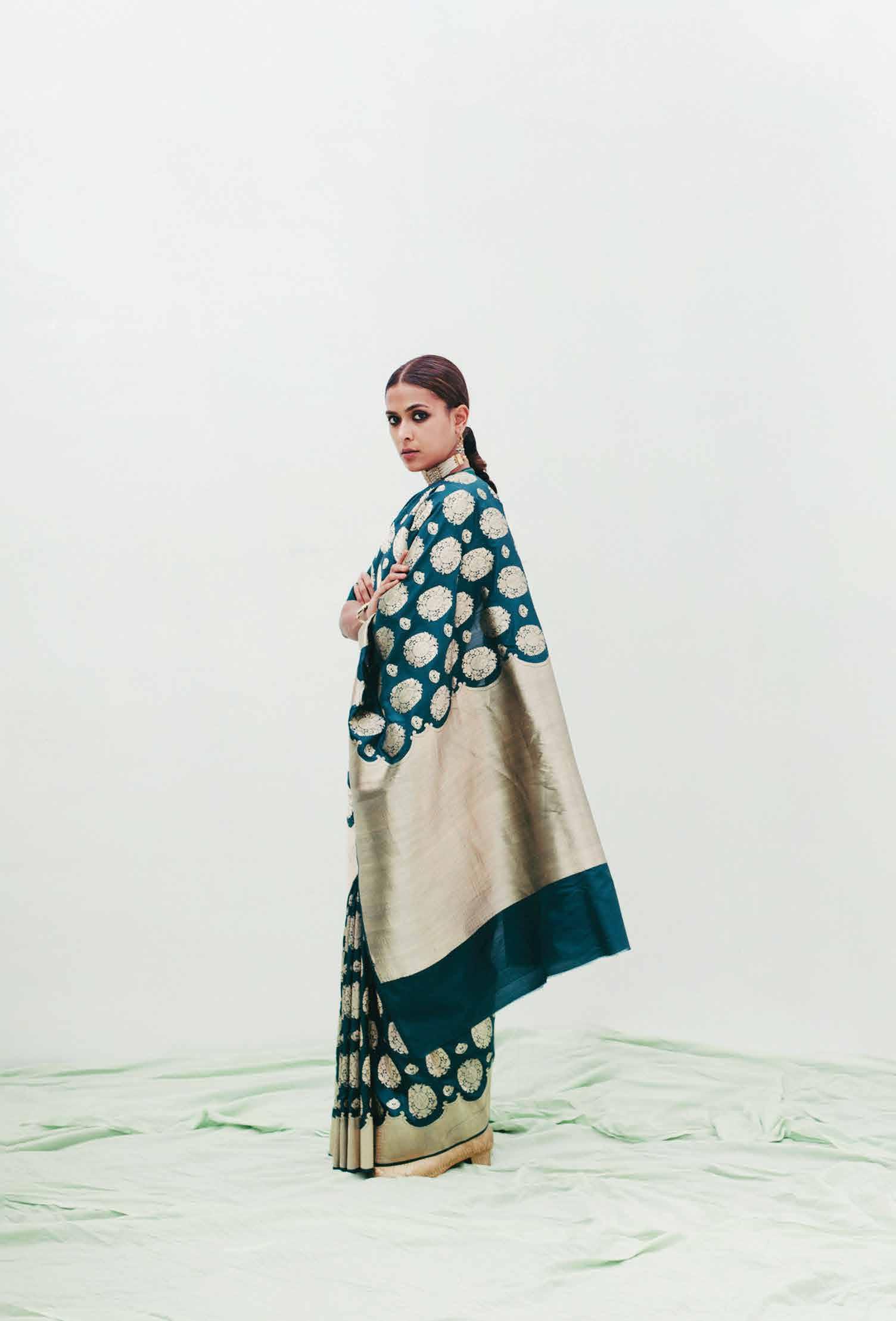
55
These pages, from left to right: Photograph of Folia Sari from the Raw Mango Other Collection, 2021.
Photo Shubham Lodha; Guler sari from Raw Mango Angoori collection, 2019.
Photo Ritika Shah
Napa Valley proved the perfect setting to fall head over heels for the electrifying Rolls-Royce Spectre
WORDS: JOHN THATCHER

Motoring AUGUST 2023: ISSUE 143 California
Love
56 AIR

57
It is both a prophecy fulfilled and a promise kept. The global launch of Spectre onto the winding roads of California’s verdant wine country was proof that Charles Rolls, one half of Rolls-Royce, was somewhat of a mystic, stating his belief in an interview given way back in 1900 that a “perfectly noiseless” electric car would likely become the norm “when fixed charging stations can be arranged.”

While Rolls prophesied, Torsten Müller-Ötvös promised, the RollsRoyce Chief Executive adamant that Spectre would be a Rolls-Royce first and an electric car second. That it most certainly is.
Adding to the marque’s number of ghoulishly named cars, Spectre was always going to steal the spotlight. Not only is it the debut Rolls-Royce EV, the first of what will comprise the company’s entire fleet come 2030, but it’s also the first EV to be classed as ultra-luxury. In short, it needed to set new standards.


As such, Spectre’s testing was, to say the least, rigorous. It began in September 2021 and involved the car travelling across the globe to experience extremes of terrain and temperature (-40°C to +50°C), racking up more than 2.5 million kilometres, the equivalent of over 400 years of normal use.
Once at the wheel of Spectre, it takes slightly less time than that (minutes, in fact) to appreciate the car’s refined engineering. Without being aware of it,
there is so much going on around you to ensure that the Rolls-Royce ride doesn’t alter in the absence of a V-12 engine that Spectre’s engineers, led by Syrian, Dr. Mihiar Ayoubi, describe it as a ‘RollsRoyce in ultra-high definition’, the most connected Rolls-Royce in history, with three times more sender-receiver signals than any previous model. In cornering alone, sensors respond to 20 different steering, braking, power delivery, and suspension parameters. Such attention to detail is characteristic of the whole car. Take, for example, the positioning of the 102kWh lithium-ion battery, placed not above or below the sills, as is the norm, but between them, adding acoustic insulation to imbue the sound of silence. Important in a Rolls-Royce. Spectre drives, as Charles Rolls predicted, perfectly noiselessly. Yes, most likely at the request of the majority of customers (Rolls-Royce always stresses the importance of canvassing their opinion), there is the option of pressing a button for a finely-tuned sound designed to mimic that of an engine-powered Rolls, but while certainly nice enough, it is, for me, needless. Silence is a luxury. And it’s
a defining feature of every Rolls-Royce. A more intriguing noise can be heard by flicking the metal air vents. You read that right. Do so and the sound is something like a percussion instrument, the sonic treat mimicked by the ping of the indicator. You sense the design team had a lot of fun.
To mark this momentous occasion in the proud history of Rolls-Royce, the design team also came up with a number of firsts for Spectre. Among them, its Pantheon grille is the widest ever fitted to a RollsRoyce, beautiful when illuminated at night; it is also the first production RollsRoyce two-door coupé to be equipped with 23-inch wheels in almost 100 years; and the first to include Starlight Doors, which see them illuminated by 4,796 stars. This is optional and may sound like cosmic overkill coupled with the Starlight Headliner, but they do pair well. Then there’s Eleanor Thornton herself, better known as the Spirit of Ecstasy. To help establish Spectre’s striking aerodynamic silhouette, Eleanor has had a little makeover; her stance lower, smoother, and more in tune with the gorgeous, gentle curve of the long bonnet. This is probably what happens should you, like Eleanor, spend somewhere north of 800 hours being blasted in a windtunnel, though she can take enormous comfort from the fact that it was time well spent — contributing to a drag coefficient of 0.25Cd; a Rolls-Royce record.
Which brings us to range, the first
58 AIR
‘ It may point to the marque’s future, but Spectre is timeless Rolls-Royce’
question everyone has when it comes to EVs, but way down the list of importance when it comes to driving Spectre, particularly around a city. That drag coefficient figure adds a fair few kilometres for a confirmed range of 530km, but given that Rolls-Royce states that its customers drive an average of 5,100km per year in their current RollsRoyce model and have all expressed a desire for home-charging, there is little chance of Spectre triggering range rage.

What it does trigger while you’re at the wheel is a smile as wide as California’s roads. Powered by twin motors — the rearward develops 255bhp, and the front 480bhp — Rolls-Royce claims that, in performance terms, this equates to an internal combustion engine of 584bhp, and will willingly take you from 0-100km/h in 4.5 seconds.

Not that you’d want to get anywhere fast. The cabin is textbook Rolls-Royce in terms of comfort and beautiful materials, while providing a canvas for bespoke expression. Just slide in (avoid the temptation, if you can, to remove your shoes to sink your feet into the lambswool floormat) and press your foot on the brake pedal. In another feature unique to Spectre, this closes the driver’s door automatically.
It may point to the marque’s future, but Spectre is timeless Rolls-Royce.


59
Making Waves
How Richard Mille is reviving vintage yacht racing, with sailboats of up to 60m attempting its debut challenge
WORDS: CHRIS ANDERSON
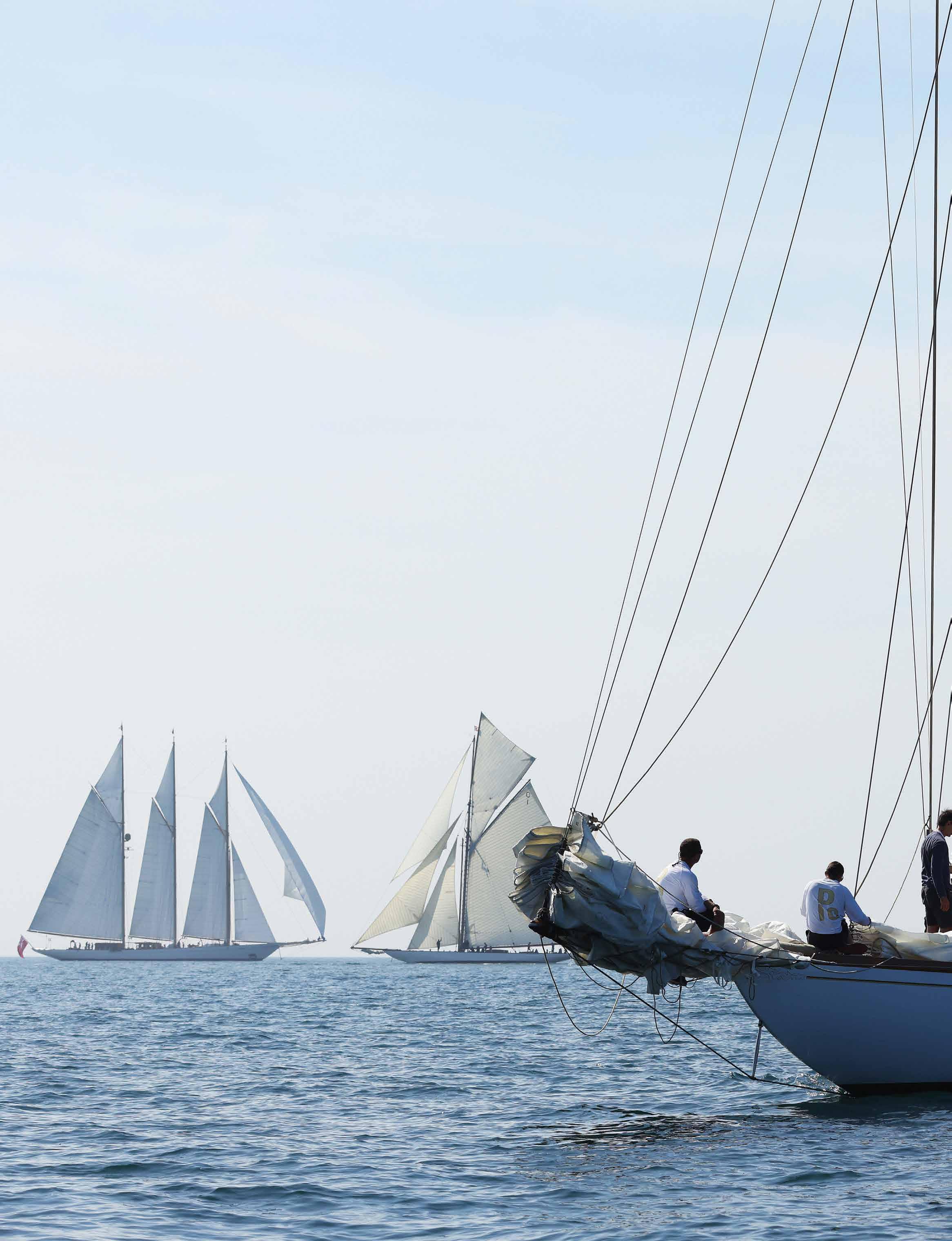
AIR 60
Sailing AUGUST 2023 : ISSUE 143


61
The association between watches and sports events is nothing new. Hublot has been the official timekeeper of the FIFA World Cup four times in a row, Rolex performs the same duties in Formula 1, and Omega has overseen the Olympic Games since 1965. Richard Mille also likes to put its name to sports, serving as sponsor and timekeeper of the Le Mans Classic since 2002, as well as other motoring events. Now the avantgarde watch brand has gone one step further by creating its own sporting challenge, the Richard Mille Cup.
This time, the sport of choice is classic yacht racing. Think 11 sailing vessels, manned by 200 crew members, dating from the end of the 19th century to the late 1930s, with some as long as 60m. A second chance for these beautifully crafted classic yachts to show their mettle on the high seas.

The inaurgural Richard Mille Cup consisted of inshore and offshore races and took place from June 10-25, with the yachts starting in Falmouth, on the coast of Cornwall in England’s southwest, and finishing on the other side of the Channel in Le Havre, northern France – the same body of water where the first great yacht races of history took place. Competitors were each divided into two categories, with Schooner for sailing ships featuring two or more masts, and Cutter for single-mast boats.
For Richard Mille himself, the appeal of these vintage crafts is obvious. “Classic yachts bear a living, breathing testimony to the highest values of workmanship, heritage and tradition, passed on to us through centuries,” he says. “By creating this challenge, we aim to set sail through history, and to bring this high-end craft very much back to life.”
This is not Richard Mille’s first foray into classic sailing either, as the brand is a long-standing partner of the Fife Regatta in Scotland. Boats designed and built by the Fife family at their Fairlie workshops on the River Clyde were popular for sailing on the great Scottish lochs during the early 19th century –excellent quality, with a third of those built still intact today, and William Fife Jr even designing two contenders for the America’s Cup. The Fife Regatta sees enthusiasts bring their craft back to Scotland from all over the world.
It seems that Mille is very fond of iconic handcrafted vessels from yesteryear, as well as the pageantry and tradition involved, and wanted to revive another type of event. “These early 20th-century sailboats were designed and built for nothing but speed, and it’s that extreme quality I appreciate,” he says. “Their beauty and efficiency contribute to their formidable personalities. Whether you look at their lines, sails or masts, everything is gorgeous. Even the slightest detail proves to be exceptional – because each has its function.
“These yachts, built from noble materials, have a soul. There are actually tremendous similarities between these boats and our watches. Granted, they’re not from the same era, but they are born of the same philosophical approach.”
The Richard Mille Cup even involves renowned sailing landmarks, making stops at such hallowed institutions as the Royal Cornwall Yacht Club in Falmouth, the Royal Dart Yacht Club in Dartmouth, and the Royal Yacht Squadron in Cowes on the Isle of Wight, before heading to France and finishing at the Société des Régates du Havre club.
“Restoration alone isn’t enough,” Mille continues. “These yachts need an environment in which they can thrive, and that’s why it’s so important to involve the yacht clubs, allowing competitors to mingle in an atmosphere redolent of the true spirit of the pre-war era.”
Standing on the coast of England or
France back in June, watching these classic yachts race along at speed, proved quite the sight, as men and women of all ages and backgrounds were pushed to their limits as they battled to man their vessels, fighting against onshore breezes, sea breezes, and even a lack of wind, and having to decide on the right sail combination while performing all manoeuvres by hand.
In the end, it was The Lady Anne that prevailed in the Cutter class, with 935 points, while Mariette was top in Schooner and the overall winner with 991 points. That meant it was these two crews posing with the event trophy, standing a metre high, commissioned from Garrard, the prestigious UK jeweller that designed the first America’s Cup 170 years ago, and has supplied the British Royal Family for 300 years. The design of the handcrafted trophy pays tribute to the elegance of the mighty sails seen throughout this race, with each winner receiving their own 40cm replica.
After two weeks of high-seas drama, the first Richard Mille Cup was an undoubted success, with plans already taking shape for the next edition. “The Richard Mille Cup has opened a new dimension in classic yacht racing, and one which we will take even further in future editions,” says Mille.
“Impelled by a passion for elegance and a taste for performance, future editions will write the next chapters of an equally captivating logbook.”
AIR 62
‘
These yachts, built from noble materials, have a soul. There are actually tremendous similarities between these boats and our watches’
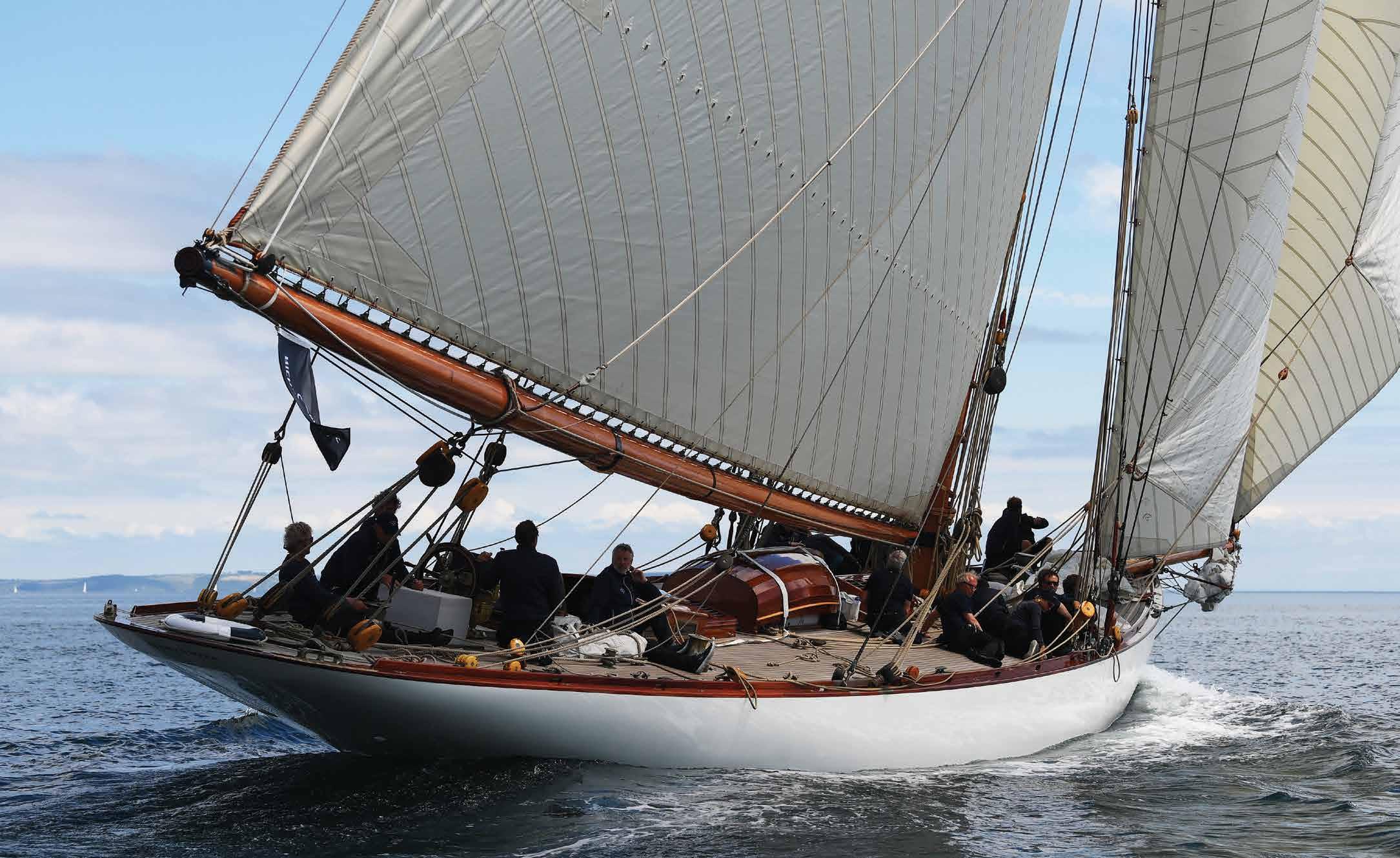


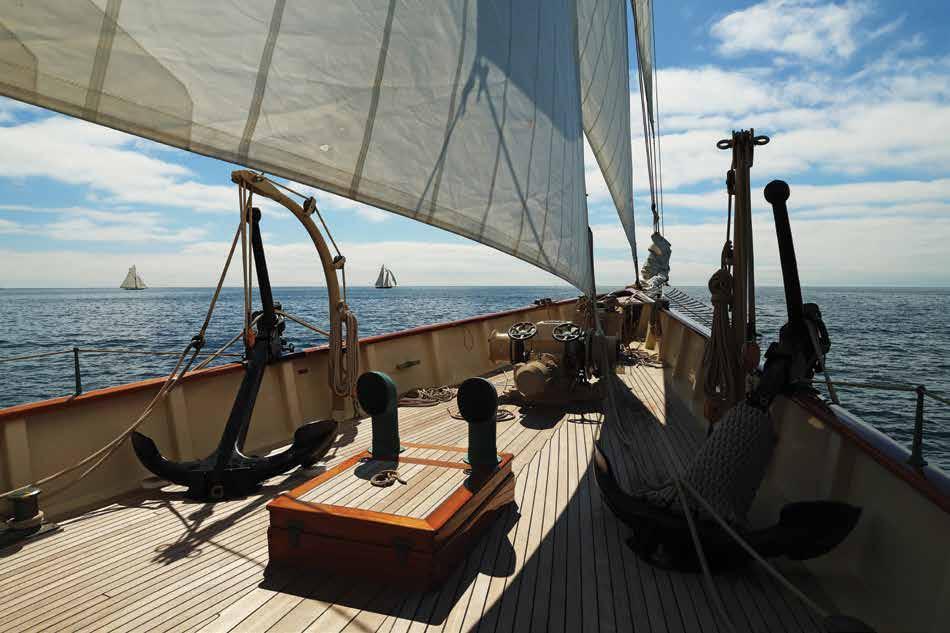
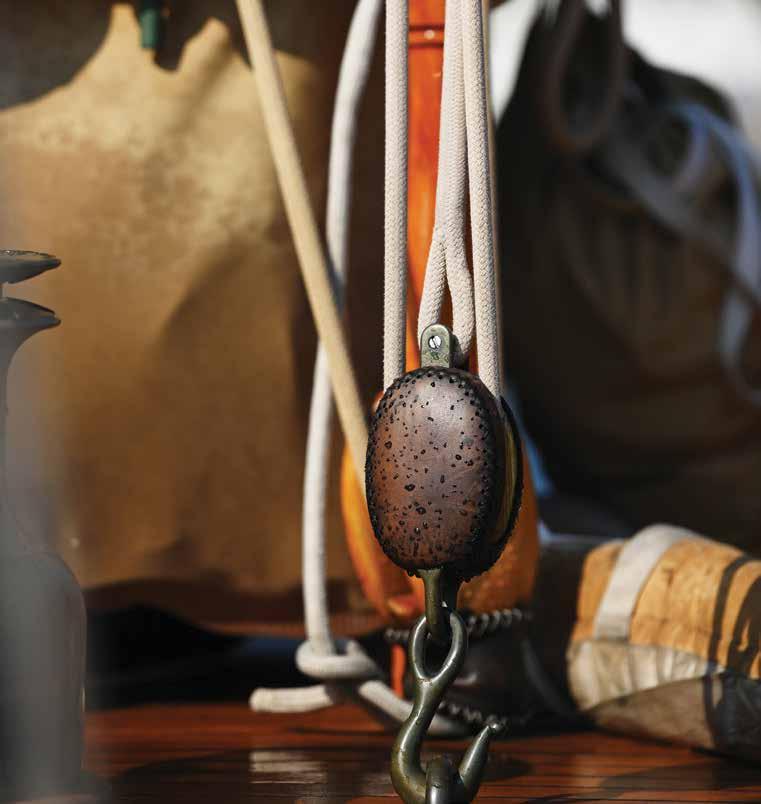

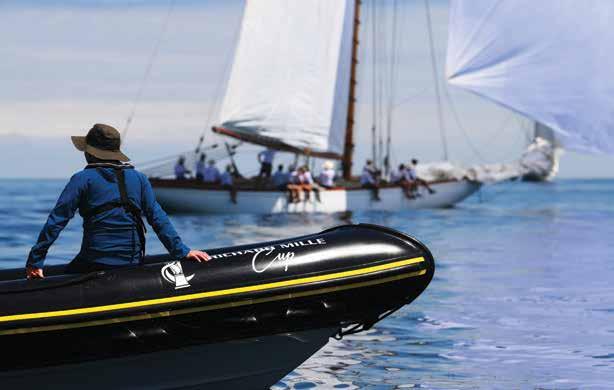
63
Talk Of The Town
How affable chef Kelvin Cheung made Jun’s Dubai’s go-to restaurant
WORDS: JOHN THATCHER

64 AIR Gastronomy AUGUST 2023: ISSUE 143
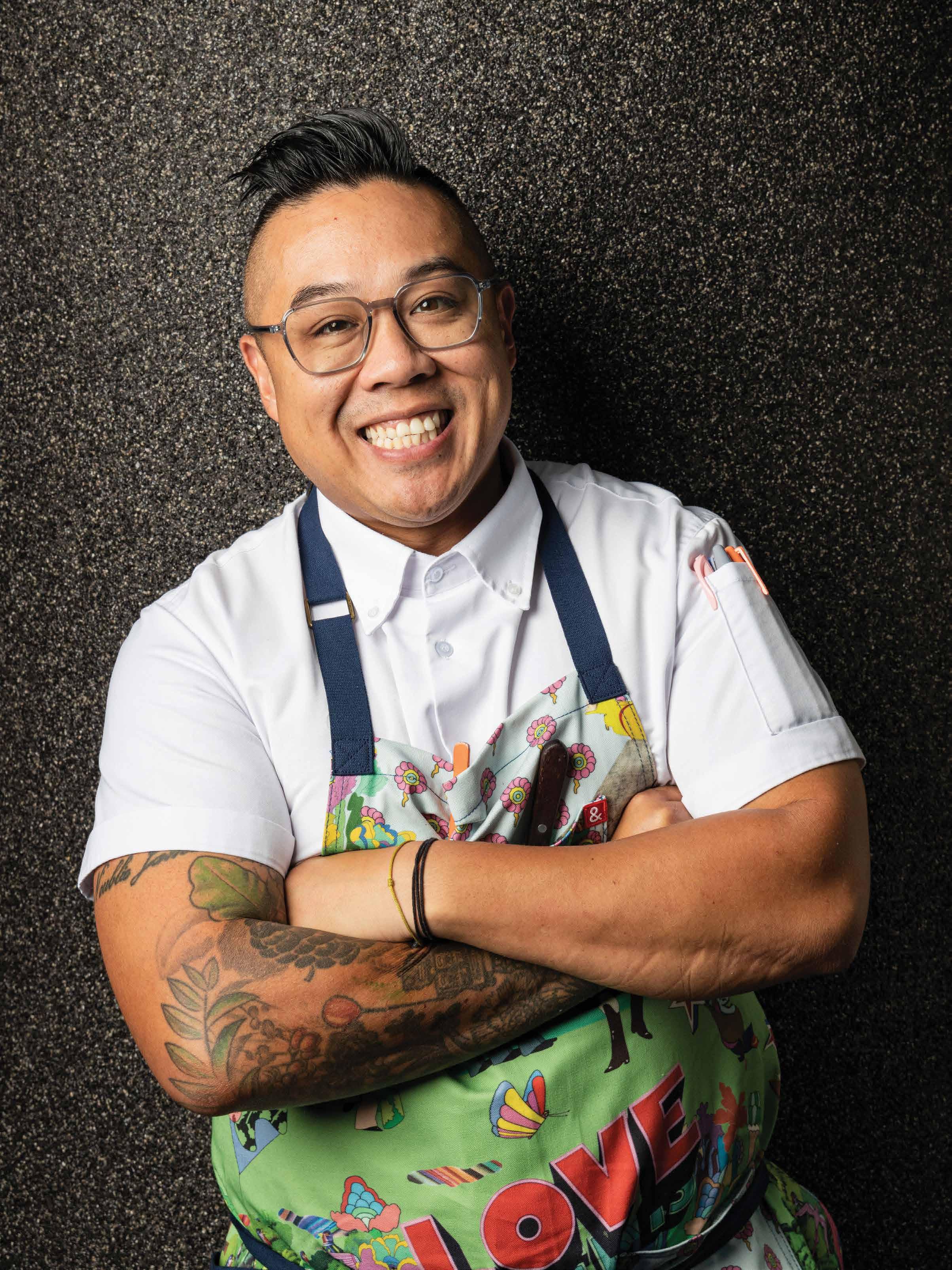
65
Kelvin Cheung may well be one of the hottest chefs in Dubai right now, his restaurant, Jun’s, the recipient of considerable acclaim from the likes of Michelin and The World’s 50 Best, but you venture he would also sweep the board were there an awards ceremony for the city’s greatest raconteurs. Stories. He’s full of them. Which is probably no surprise, given that his career thus far has taken him across the globe, from Canada to the United States, Belgium to India, and, since 2021, the UAE. Yet had Cheung not met his wife, Andrea, during those travels, it seems likely that his stories (some of which are jaw-droppingly candid) would have remained untold. “She literally shoved me out of my comfort zone right into the spotlight. Her relationships were much stronger than mine in the media world and she helped build the side of the chef gig that I find the hardest — publicity. After years of practice, I am much more at ease in front of cameras, in interviews, and speaking to any kind of audience.”
Jun’s dishes have tales of their own. Cheung calls it “borderless cooking,” his eclectic, exciting menu comprised of flavours drawn from the countries he’s cooked in and memories were made. “A love letter to my upbringing, if you will,” he says, before running through some of the menu’s biggest hits. “The rainbow heirloom carrots is a true third-culture cooking dish that is inspired by a very American core childhood memory of mine, incorporating Asian flavours and essence,” says Cheung. “I grew up in a traditional Chinese household that generally had rice and noodles as part of their daily diet, but my mother fell in love with bagels topped with cream cheese and smoked salmon, which inspired me to recreate that same smoky flavour profile in a vegetarian form.” He’s done so by teaming charred baby carrots with smoked labneh and candied walnuts, served with house-baked sourdough.
“Growing up in Toronto, cream corn was one of my favourites. At Jun’s, I use it as a side to go with a fresh Hokkaido scallop that’s been seasoned with a little chilli crunch, paired with yuzu kosho, and set
atop crispy sushi rice. I always tell guests to pick it up, swipe it through the corn, and eat it in one go.”
Inspired by Cheung’s time in India, where he helmed celebrity favourite Bastian in Mumbai, there’s lobster pani puri, a street snack he used to buy regularly from a vendor who lived opposite him in the city. Cheung’s elevated version packs incredible flavour.
Even desserts pay homage. “Below my father’s largest restaurant there was a skating rink, and for many days a week I would be banished there to stop disrupting his lunch service! While hanging out I befriended the coffee shop owners, and every trip to the counter resulted in a free hot chocolate with extra marshmallows.” The cuisine-bending result is baked Alaska tiramisu mochi, for which gluten-free sweet potato mochi is stuffed with toasted Japanese sesame, peanuts, and coconut, topped with espresso ice cream and brown butter semifreddo, and finished with burnt marshmallow and a shot of hot chocolate mocha. Divine. Just don’t count the calories. A third-generation chef, Cheung remembers helping the head baker at his father’s restaurant when he was no older than four, making almond cookies. “My family made sure we all supported the business, as they were busy working hard to build a new life for us in North America,” says Cheung. “I grew up always lending a hand, whether it be washing the dishes at the age of 12 or making fortune cookies with my elder brother.”
Also helping out was Cheung’s grandmother, who escaped poverty and back-breaking labour at a limestone quarry in mainland China when she married, eventually leaving Hong Kong, where she had opened successful, hole-in-the wall eateries, to help Cheung’s father in his first three restaurants in Toronto. “There is something magical in her hands, and at age 103 she still directs any kitchen she is in,” says Cheung proudly. However, despite the familial ties that weave through the restaurant industry, his father did not wish for the teenage Cheung to follow him into the kitchen. “The typical Asian parent's dream is to see their child become a doctor, lawyer, or engineer, so from a very young age I had it set in my head to achieve one of those three careers. Although I was basically raised in a kitchen, my father saw his children cooking as a contribution to the family business but never as a long-term career. I started in pre-medical at the University of Chicago, but quickly realised that my passion lies within feeding people, not fixing them.”
There then followed a difficult conversation, during which Cheung informed his father. “It was nervewracking, not pleasant. Eventually, he came around to the idea and sat me down to give me a look into what the life of a chef and restaurateur really looks like. He laid out the sacrifices of holidays, spoke about the pressure of keeping guests coming back, teams motivated, and vendors paid, and then helped me plan on the best way to approach my new career.”
As is its habit, history may well repeat itself. “Funnily enough, I can now understand my father’s wishes, because the one career I do not want for my son, Bodhi (age 4), is the restaurant business. There are so many sacrifices, physical demands, and a career in cooking does not lend itself well to work-life balance. I would never change it for myself, but I hope for bigger and better things for my own child.”
Few restaurants in Dubai are as big or better than Jun’s right now. Head there and Kelvin Cheung will revel in telling you all about it.
AIR 66
‘ I was practically raised in a kitchen, but my father never saw it as a long-term career for me’


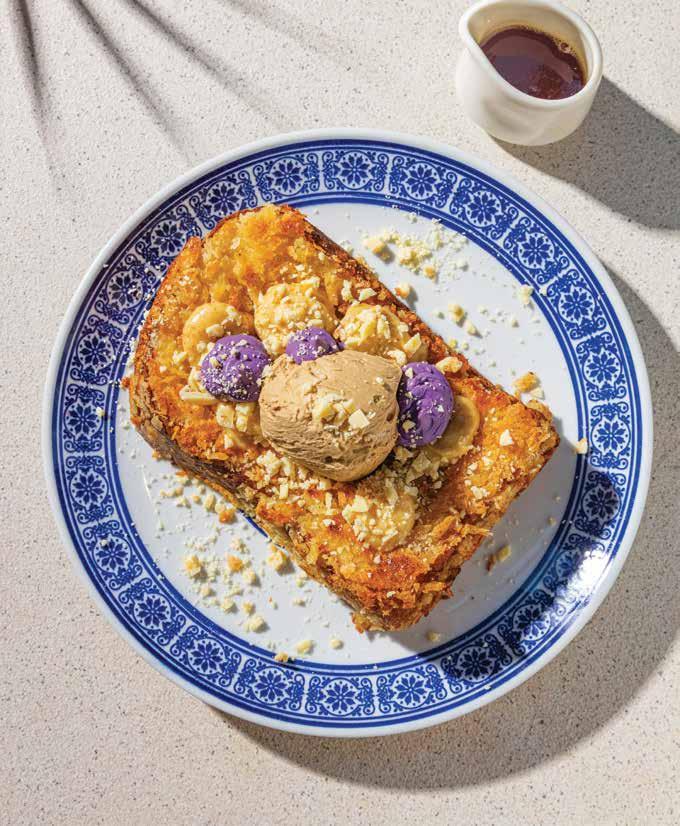

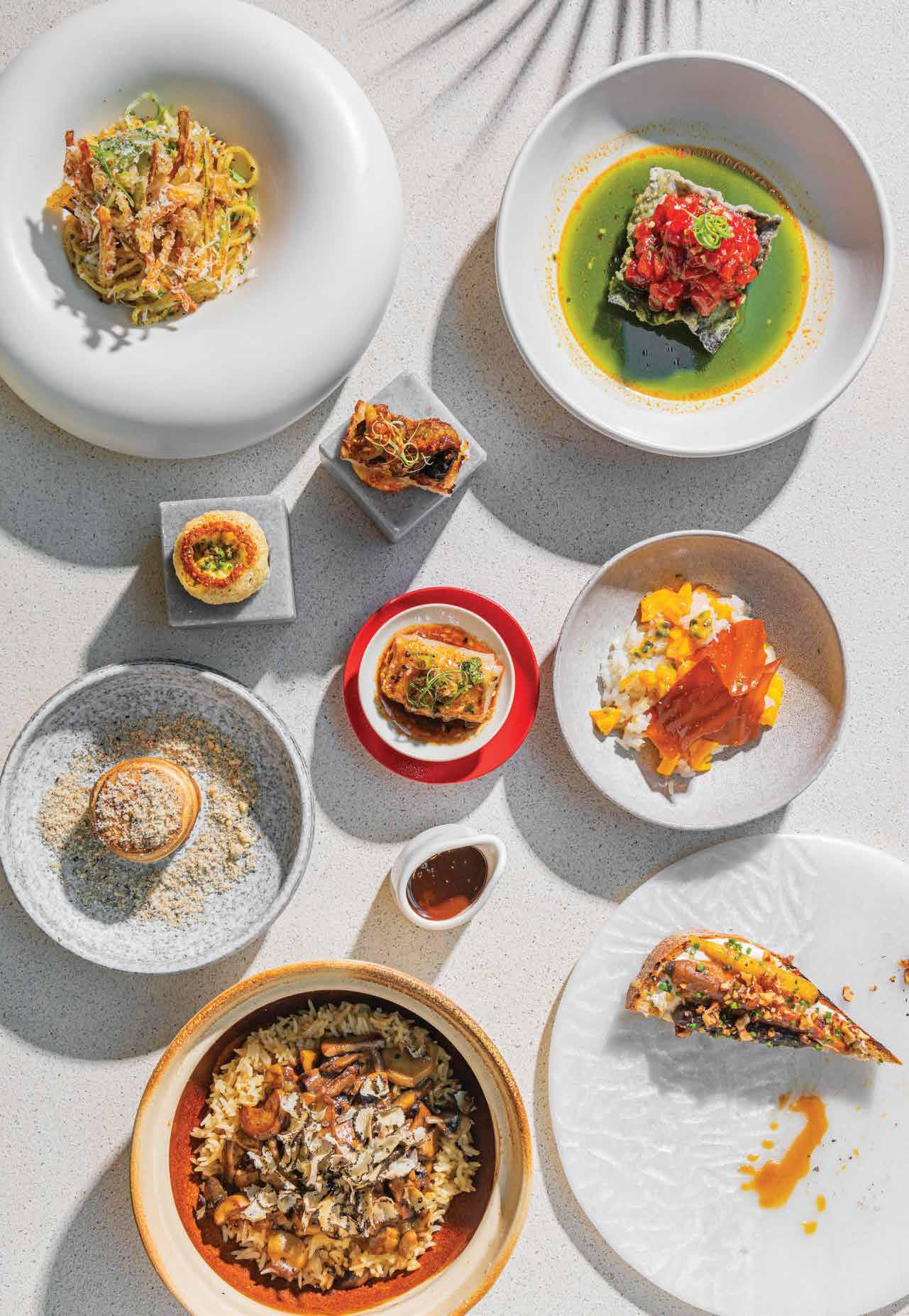


67
JOURNEYS BY JET
A Taste For Tokyo
The Peninsula Tokyo proves the perfect spot for a first bite of this wonderfully welcoming city
WORDS: JOHN THATCHER

68 AIR
Travel AUGUST 2023: ISSUE 143
The presence of the translator was moot at this point. There was no misunderstanding the universal language of laughter, the Chinese head chef tickled pink as he remoulds my derisory attempt at making dim sum. All that was required of me was to enclose a sweet filling inside pre-made dough, working it gently but swiftly between my finger and thumb until the filling became invisible beneath a peak, to resemble a mini yet dormant volcano. Unfortunately, mine more resembled a volcano that had violently erupted, the filling spilling down the sides. By the end of the masterclass – one offered by the Peninsula Tokyo as part of a series of Peninsula Academy programmes available to guests – my basketful of dim sums looked slightly more like the real thing, my prize for not proving completely incompetent a magnificent tasting menu of impeccable Cantonese dishes enjoyed in the hotel’s Hei Feng Terrace, including a memorable Mogami beef in XO sauce, the spicy seafood condiment that was actually invented by chefs at the Peninsula Hong Kong. It proves so filling I’m unable to eat the fruits of my labour when they’re presented to me freshly baked at the end of my meal. A bullet dodged.
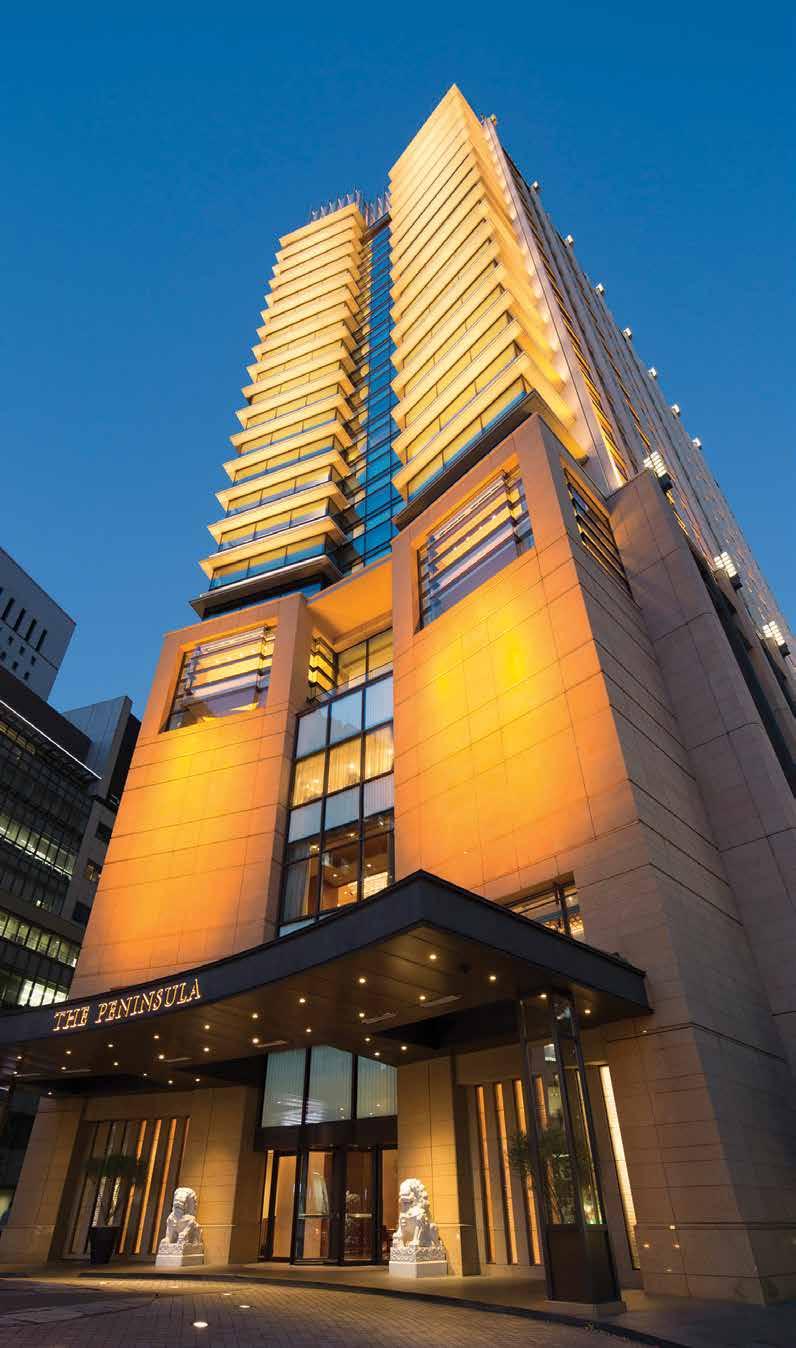

69




70 AIR
‘ If a day’s sightseeing proves dizzying, the Peninsula is something of a sanctuary on your return’
I was just as fortunate to choose The Peninsula as my base for exploring Tokyo. Adjacent to the tree-lined grounds of the Imperial Palace and the peaceful Hibiya Park, it’s a short walk to the upscale district of Ginza and mere steps from a subway line that connects some of Tokyo’s must-see sights (it’s actually directly connected to exit A6 of Hibiya Station). Those sights most definitely include Harajuku, which should be the first stop for any first-time visitor keen to get a sense of the city’s fascinating culture.
First there’s the historic: Meiji Shrine is dedicated to the deified spirits of Emperor Meiji, who reigned from 1867 to 1912, and his consort, Empress Shoken, whose love is encapsulated by two trees grown so close together their branches appear as one. The whole area comprises dense forest through which shaded walking paths wind, accessed through a huge torii gate. In the first few days of the New Year, some three million visitors come here to conduct the year’s first prayers, but on any other given day a sense of tranquility pervades.
In rich contrast, Harajuku is also home to Takeshita Street, the 400-metre-long epicentre of teenage fashion. This is where they come to play dress up, clad in sky-high platform footwear and vibrantly coloured clothing and make-up, eating outsized candyfloss and booking slots at cafes that allow you to cuddle the likes of puppies, otters, or mini pigs.
You could easily use up all the available space on your phone taking pictures here. A short distance from here is the other eye-popping attraction that’s famed globally, the Shibuya Crossing, the crisscross intersection that up to 3,000 people walk across every two minutes. Order a coffee at the adjacent Starbucks and watch the action unfold from its second-floor vantage point. If that proves a dizzying sight, the Peninsula is something of a sanctuary on your return. Its spa is among the city’s finest, complete with an indoor 20-metre pool, though the spa stands apart from all others by being the only one to offer guests the option of a shiatsu massage. It instills a feeling of deep relaxation by using the fingers and palms to apply pinpoint pressure to muscles, coupled with gentle stretches. Dating to the outset of the past century, shiatsu was founded by the late Tokujiro Namikoshi, whose grandson performed my massage at the Peninsula. The kind of unique experience that earns the hotel its reputation for exceptional service. A signature of this service can be found in every room. A valet box invites you to place your shoes inside, which are then dispatched down a shaft. Soon after, a light indicates that they have been returned, beautifully polished. Not a spot missed. Such detail is important to Peninsula,
and the Grand Premier Suite – perched on the hotel’s highest floors to offer up fine views of the Imperial Palace Gardens – is brimming with it. Everything has been considered, including what you look at on the ceiling when you lie in bed – in this case, an intricate wood carving. The bedroom door is a thing of beauty, one single piece carved from a tree, while just above the bathtub in the bathroom is a button that says ‘spa’. Press it once you’ve slipped into a hot bath and not only do the lights dim, but a soothing soundtrack begins to play.
Even room service at the Peninsula is rich in detail, designed to give guests a flavour of traditional Japanese cuisine and experiences. Exclusive to the hotel is a partnership with what is arguably the world’s most famous ramen restaurant, Ippudo. Its celebrated velvety soup and string-thin noodles are delivered to your room along with a wooden box replete with 12 toppings. A member of the hotel’s room service team is on hand to pour the piping hot soup over the noodles, adding a sprinkling of green onions. It’s delicious. As was dinner at Peter, the hotel’s sky-high fine-dining restaurant, where you get to sample the country’s finest wagyu and seafood sourced that morning from Tokyo’s famed fish market. Like much of the offering at the Peninsula Tokyo, it’s easy to get a taste for the finer things.


71
All images courtesy of Peninsula Tokyo
The best piece of advice I ever received was from my grandmother, who always told me to keep going, no matter what happens. She always believed in me and my talents, and I hear her voice guiding and pushing me every day.
The first thing I do each day is exercise. I always do so in the morning to keep my mind fresh all day long. It’s so important for your mental health, as well as your physical wellbeing, to stay as active as possible.
Never take success to your head, and never take failure to your heart. My business, Alina Anwar Couture, is now in its fifth year and I’m so proud of what I have achieved. But it has not come easy – I’ve learnt so many lessons on
Alina Anwar
FOUNDER, ALINA ANWAR COUTURE

the way; from who to trust to picking myself up when things have gone wrong. A combination of my tenacity and surrounding myself with a strong network of friends and family to keep me grounded has led me to where I am now.
My Mom has been my biggest inspiration. It was watching my mother and her beauty, grace, and sense of style, that influenced my decision to begin fashion designing. It is also thanks to her encouraging words that I took the leap to begin my own label.
I feel personal success is achieved through personal development. It is important to have vision, ambition, and passion for whatever you do in life. You should believe in yourself, set goals, and commit to
them. You should accept responsibility and manage your time effectively.
If I could go back in time to tell my younger self something, it would simply be to follow your passion.
It has always been my goal, through Alina Anwar Couture, to empower women through powerful dressing. If a woman feels she looks good on the outside, she’s more likely to feel confident on the inside, and the thought of making women feel their very best is what drives me every day.
I have so much more creativity that I can’t wait to unveil. The fifth anniversary of my brand has given me the chance to reflect on what I’ve achieved so far and how I can use this experience to move forward, bigger and better than before.
What I Know Now 72 AUGUST 2023 : ISSUE 143 AIR
Illustration: Leona Beth


































































 BREGUET TYPE XX
BREGUET TYPE XX



























































































































